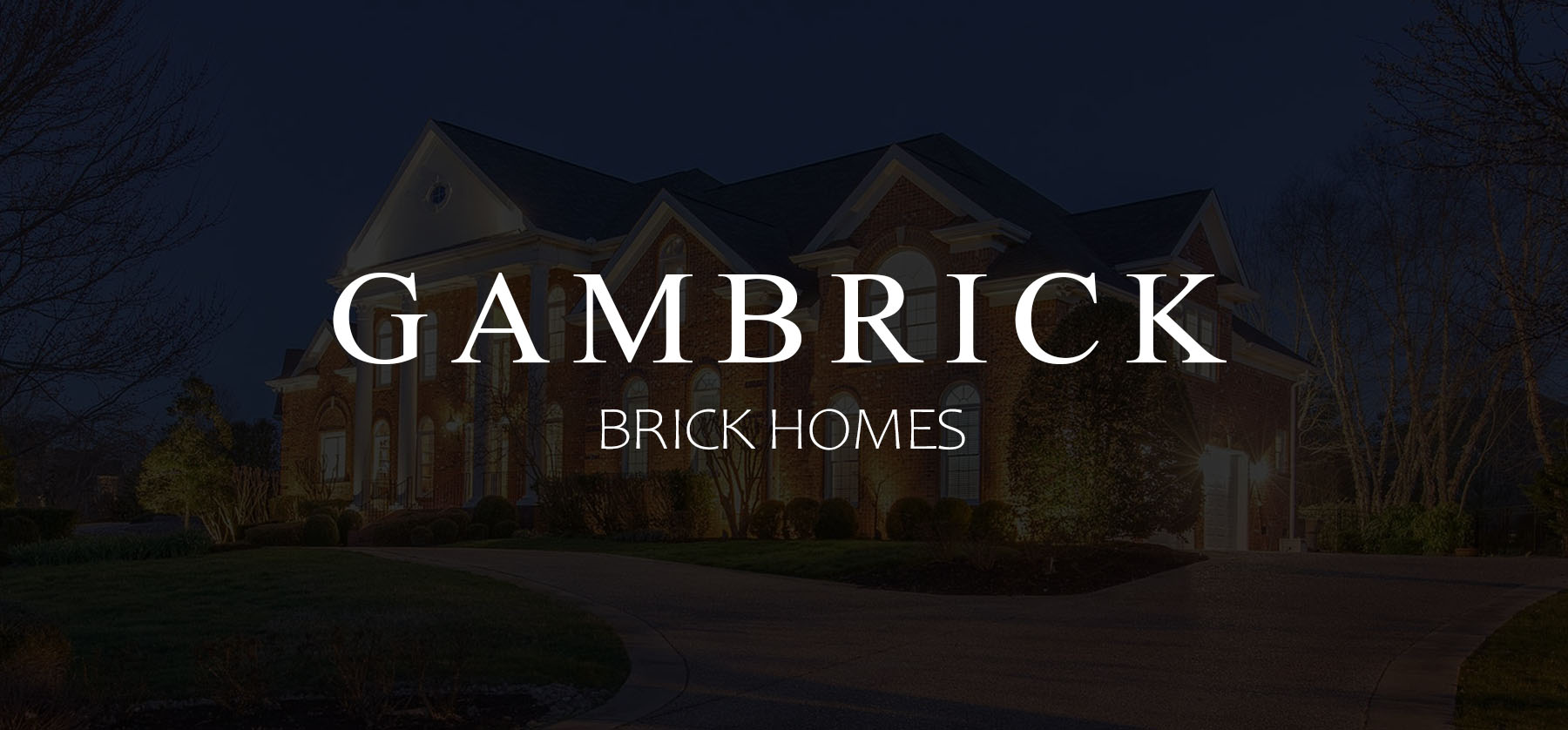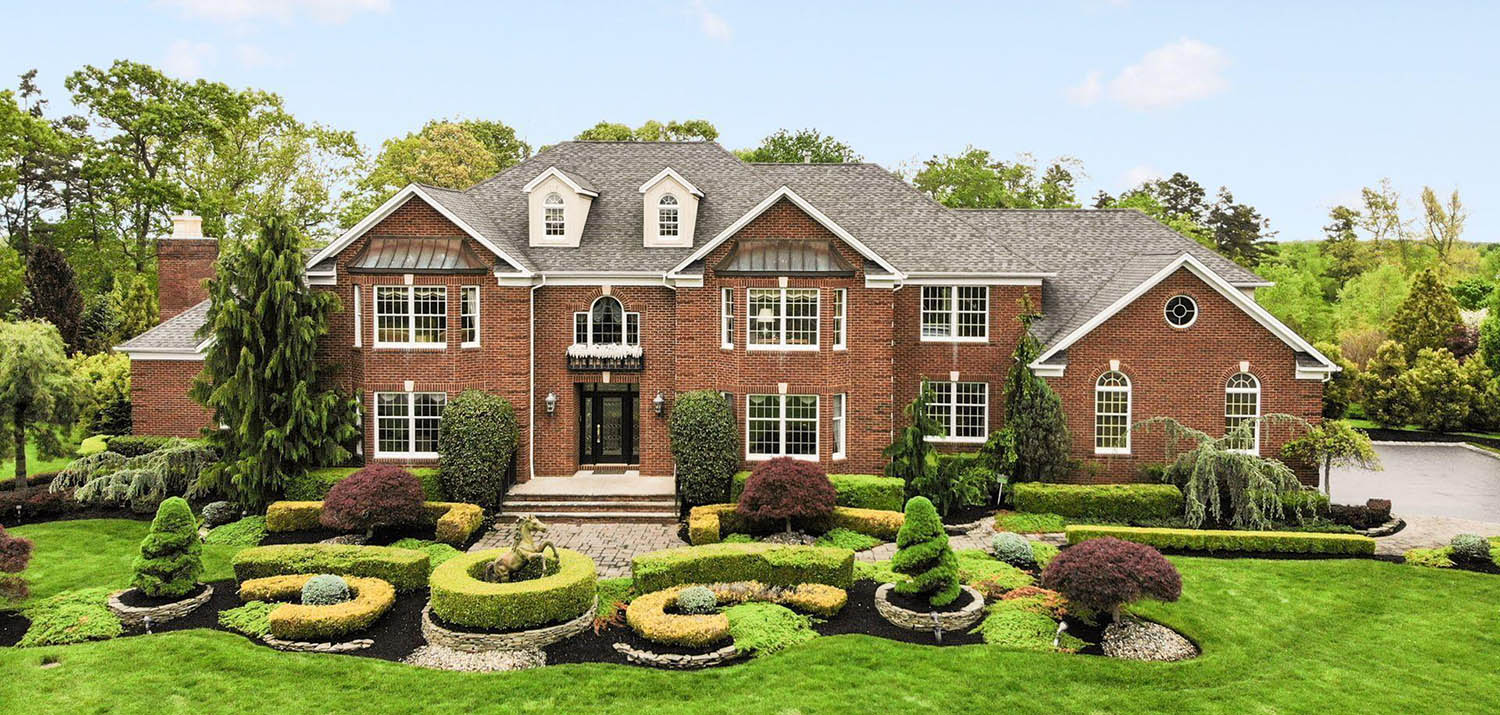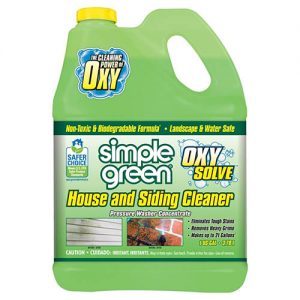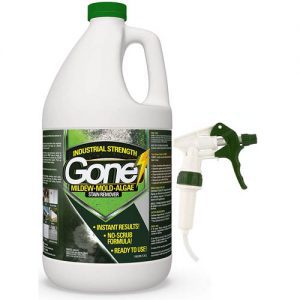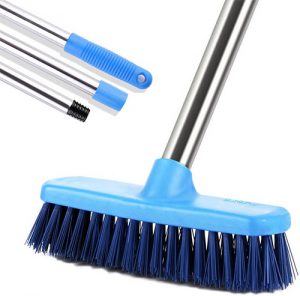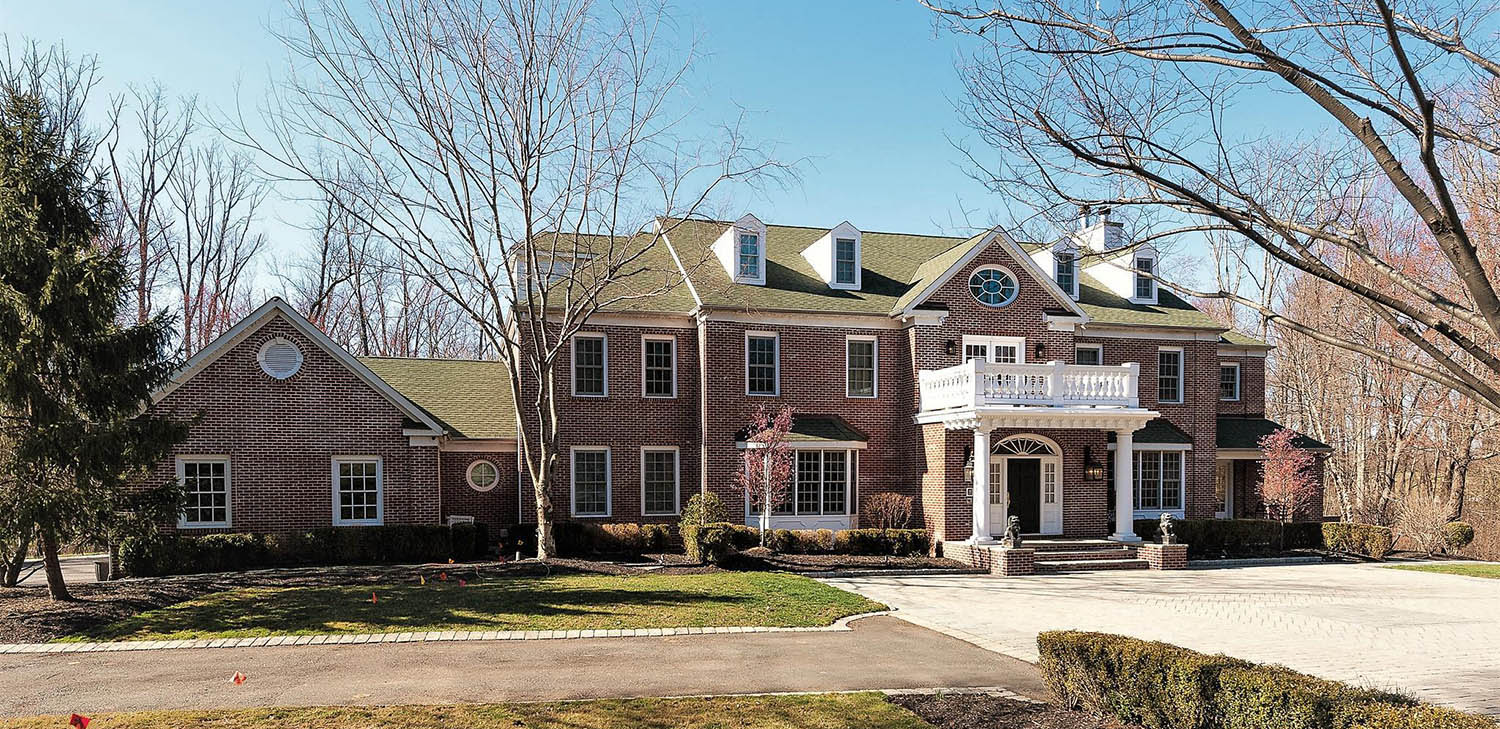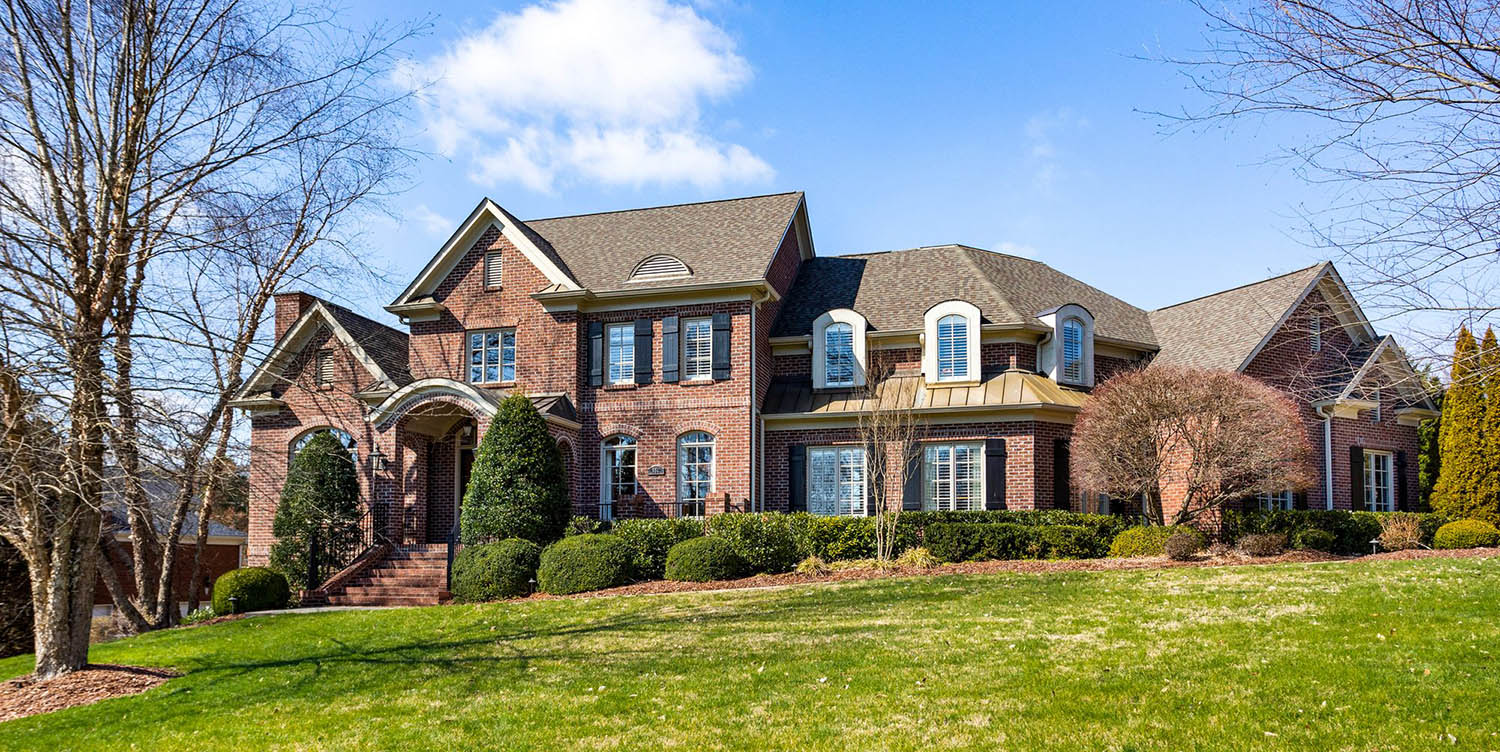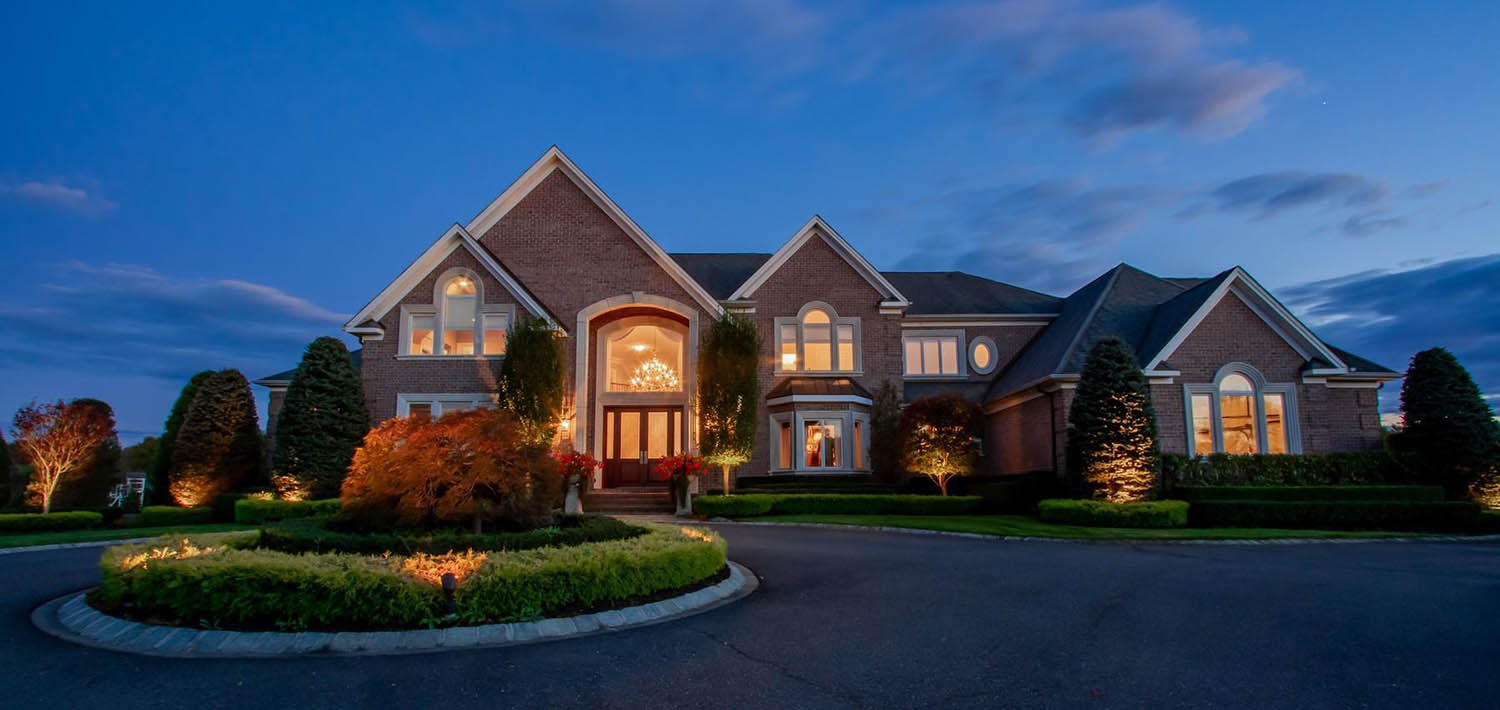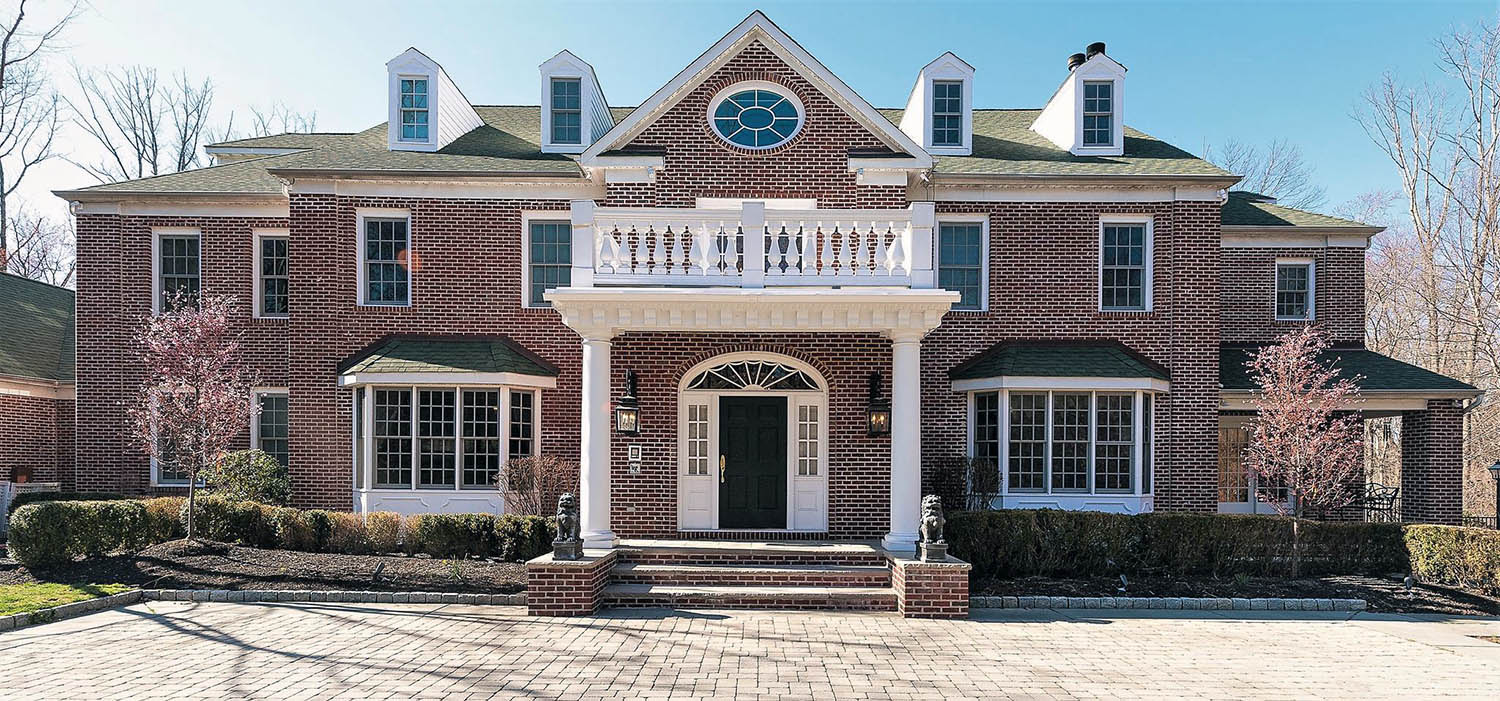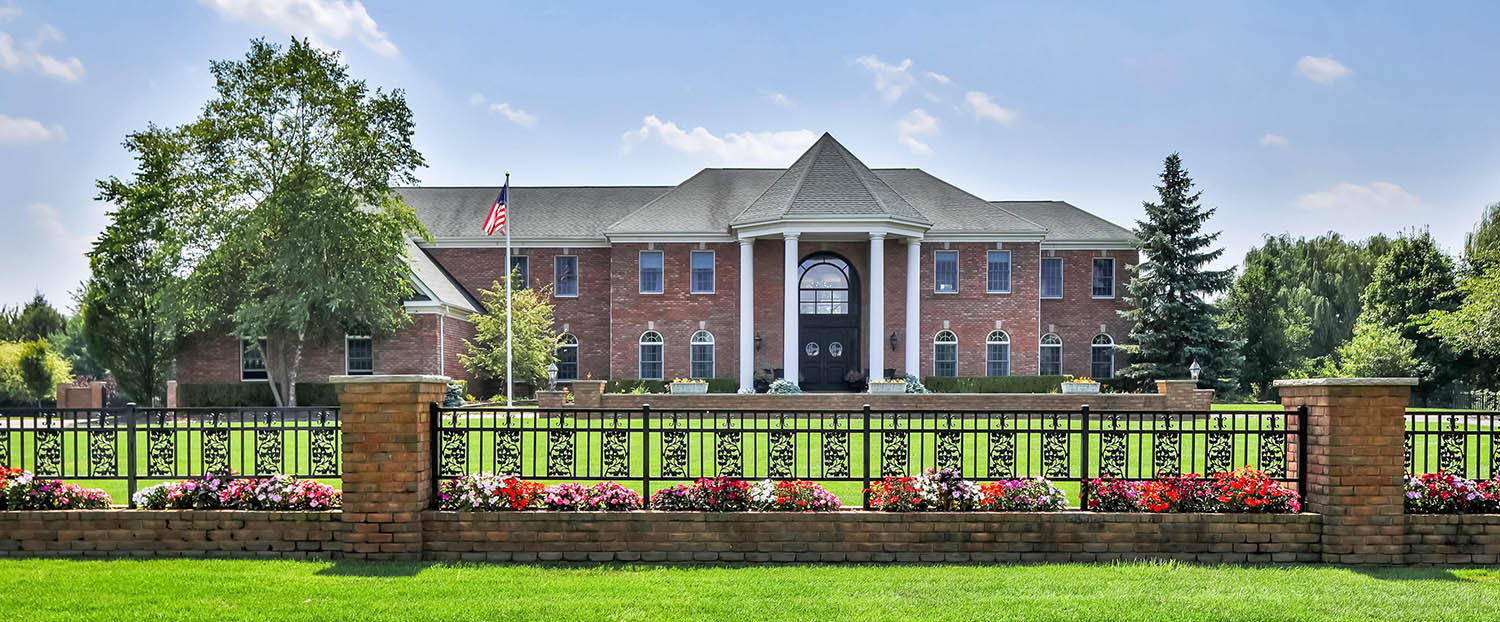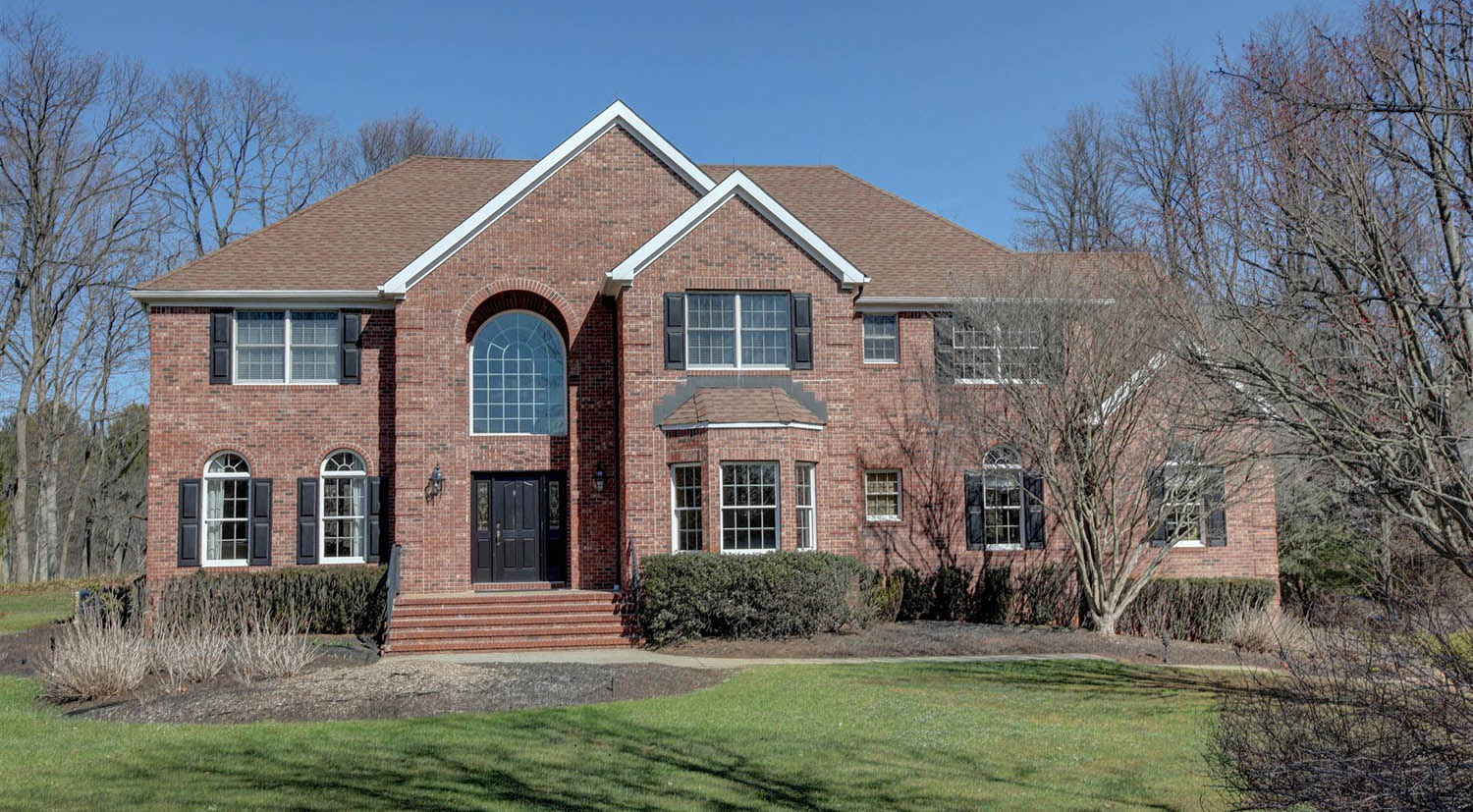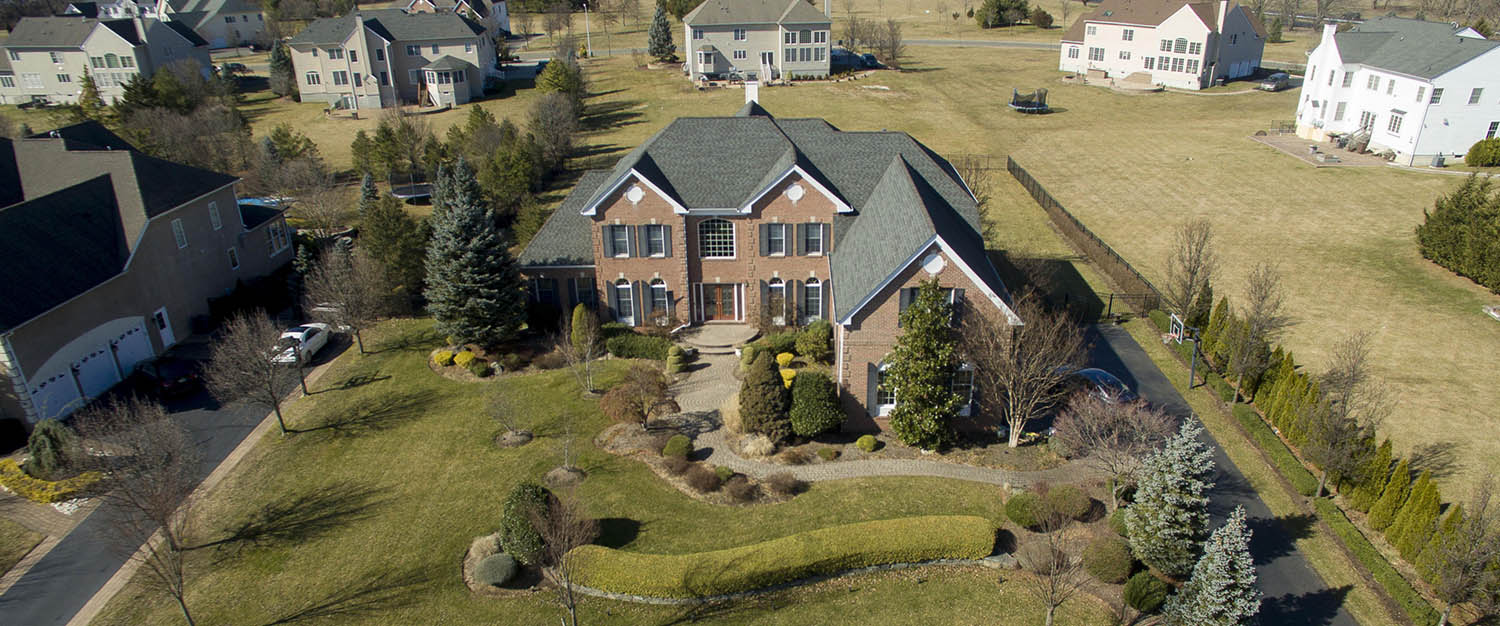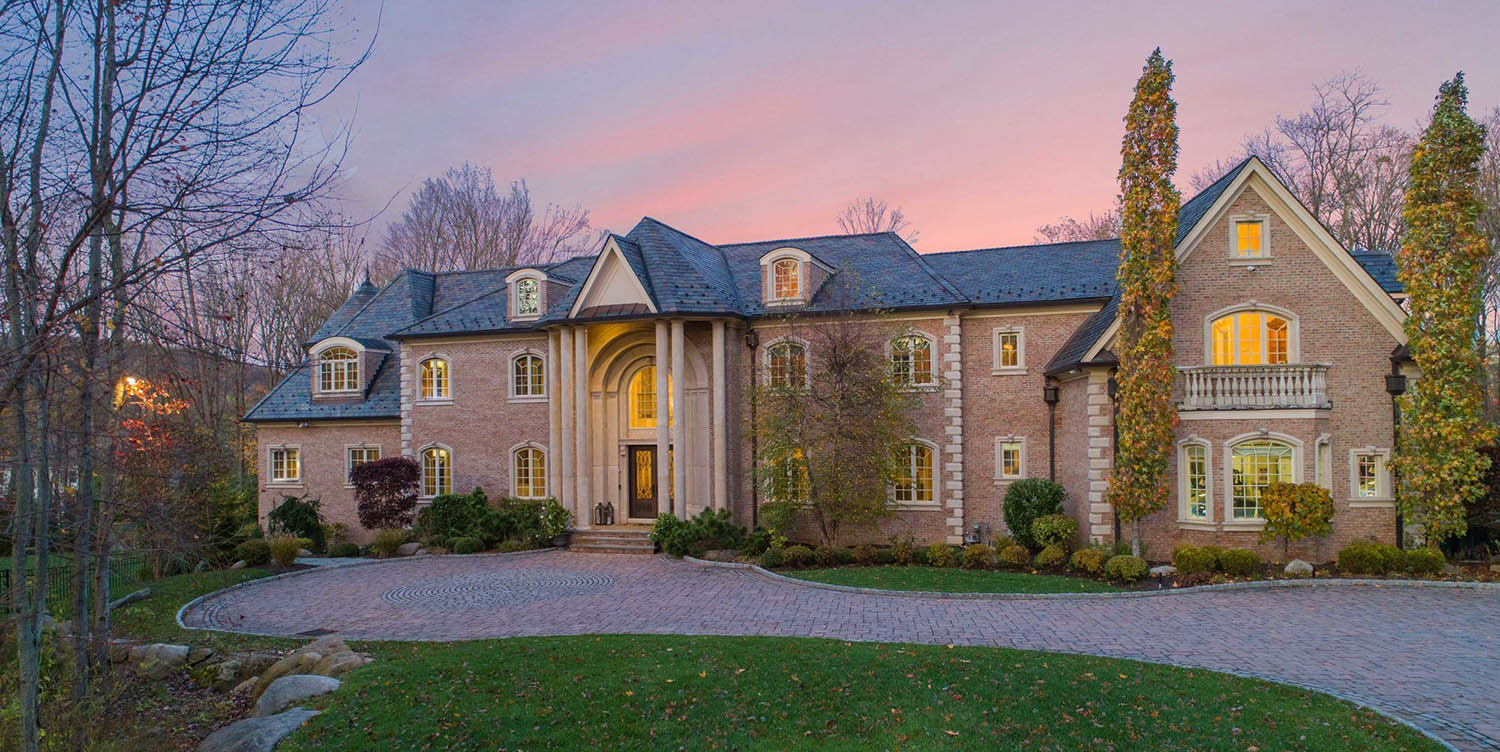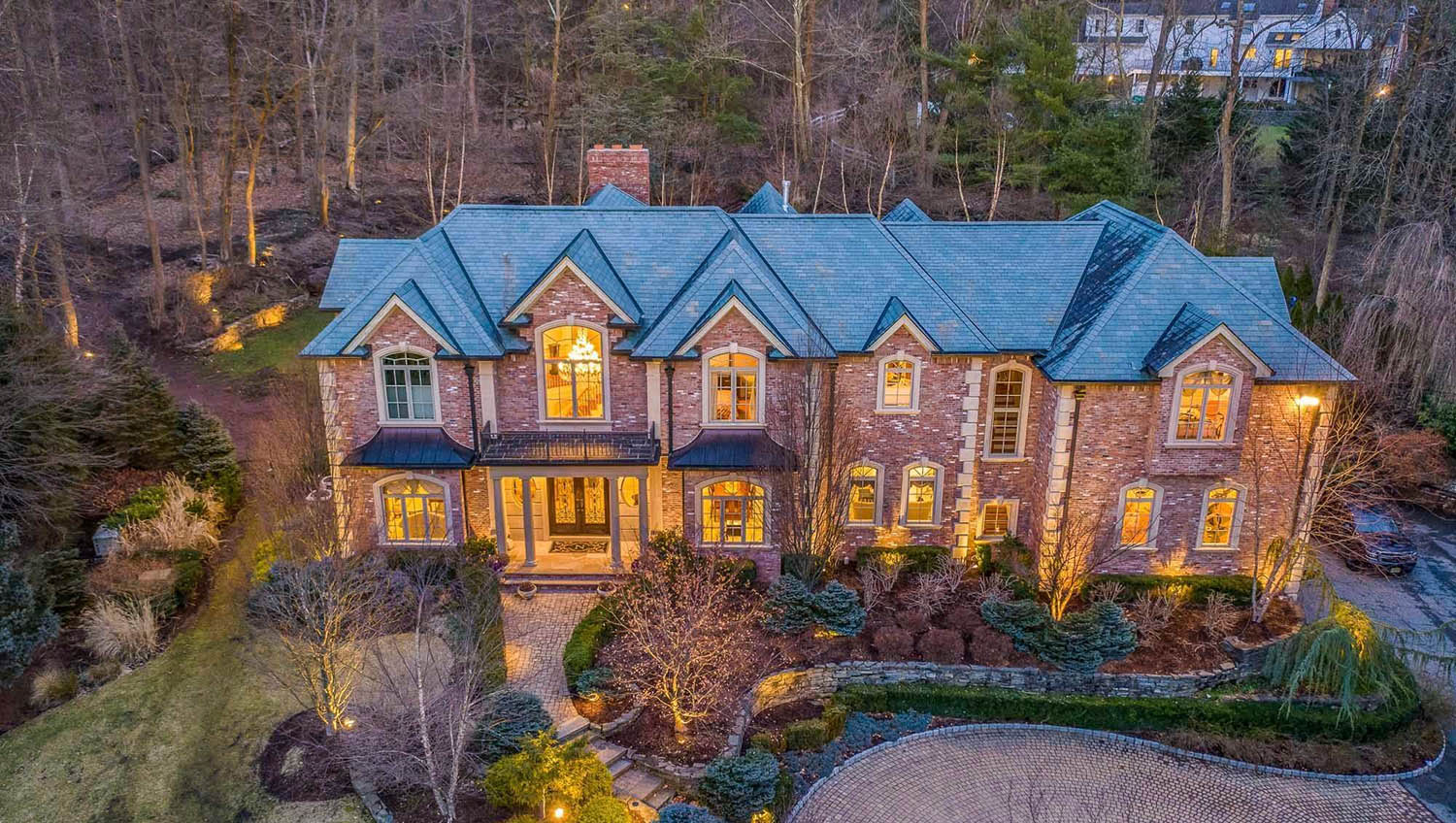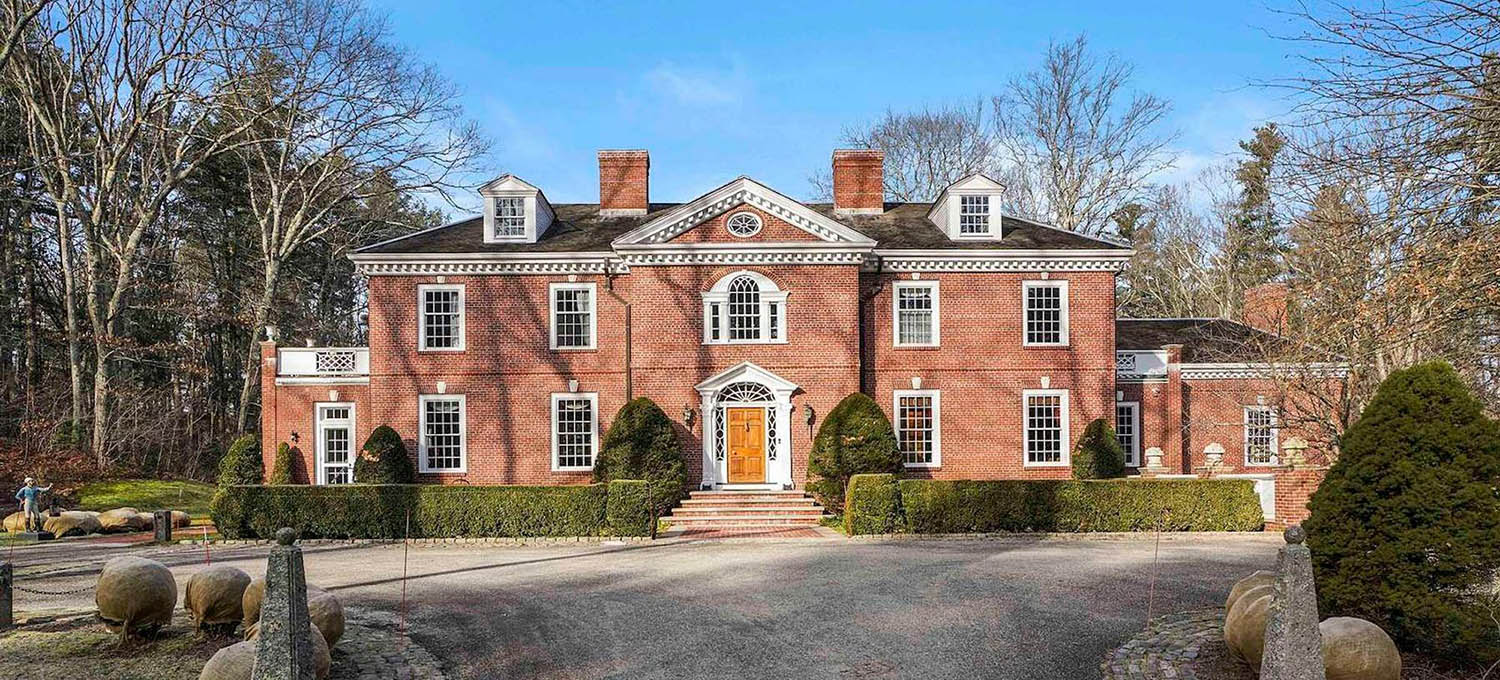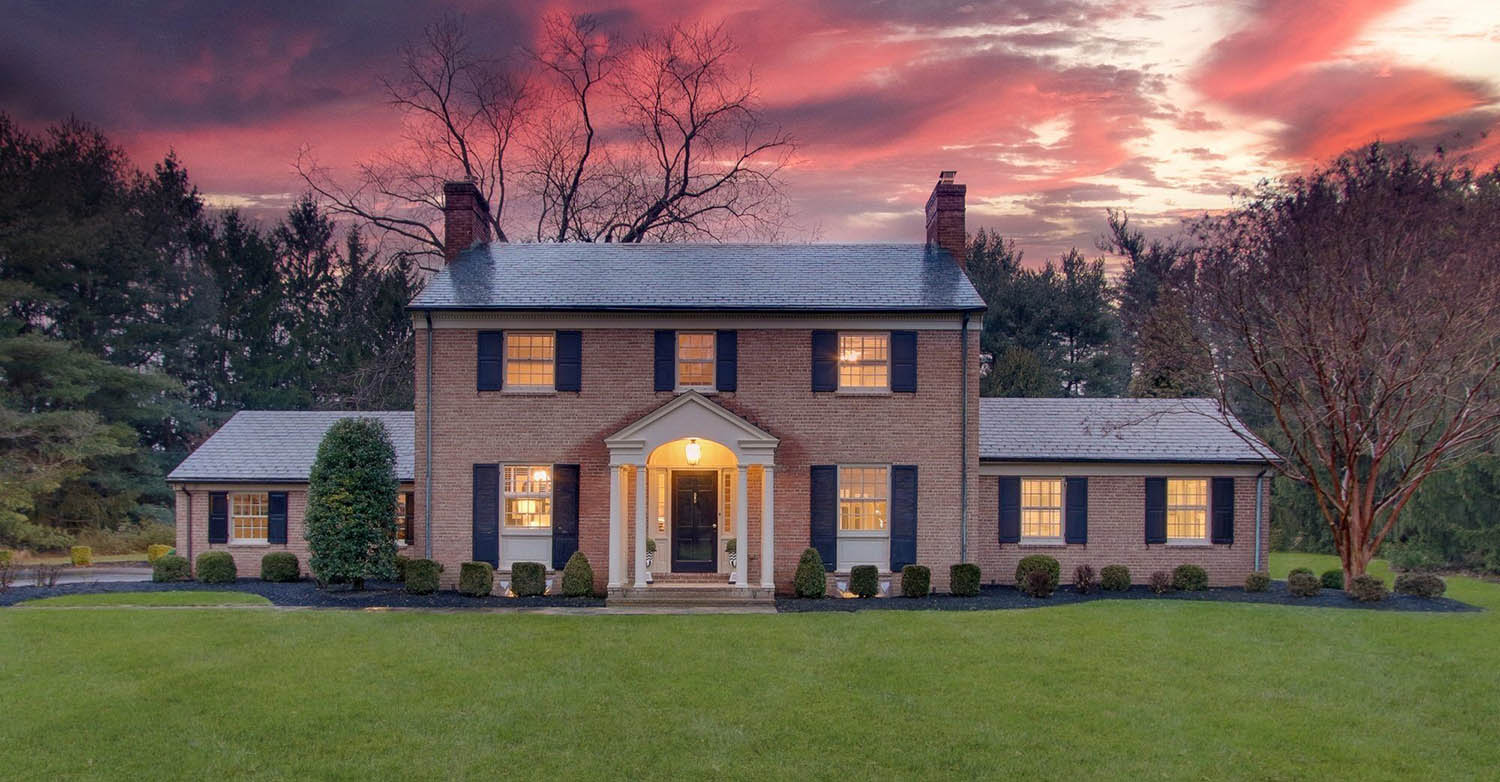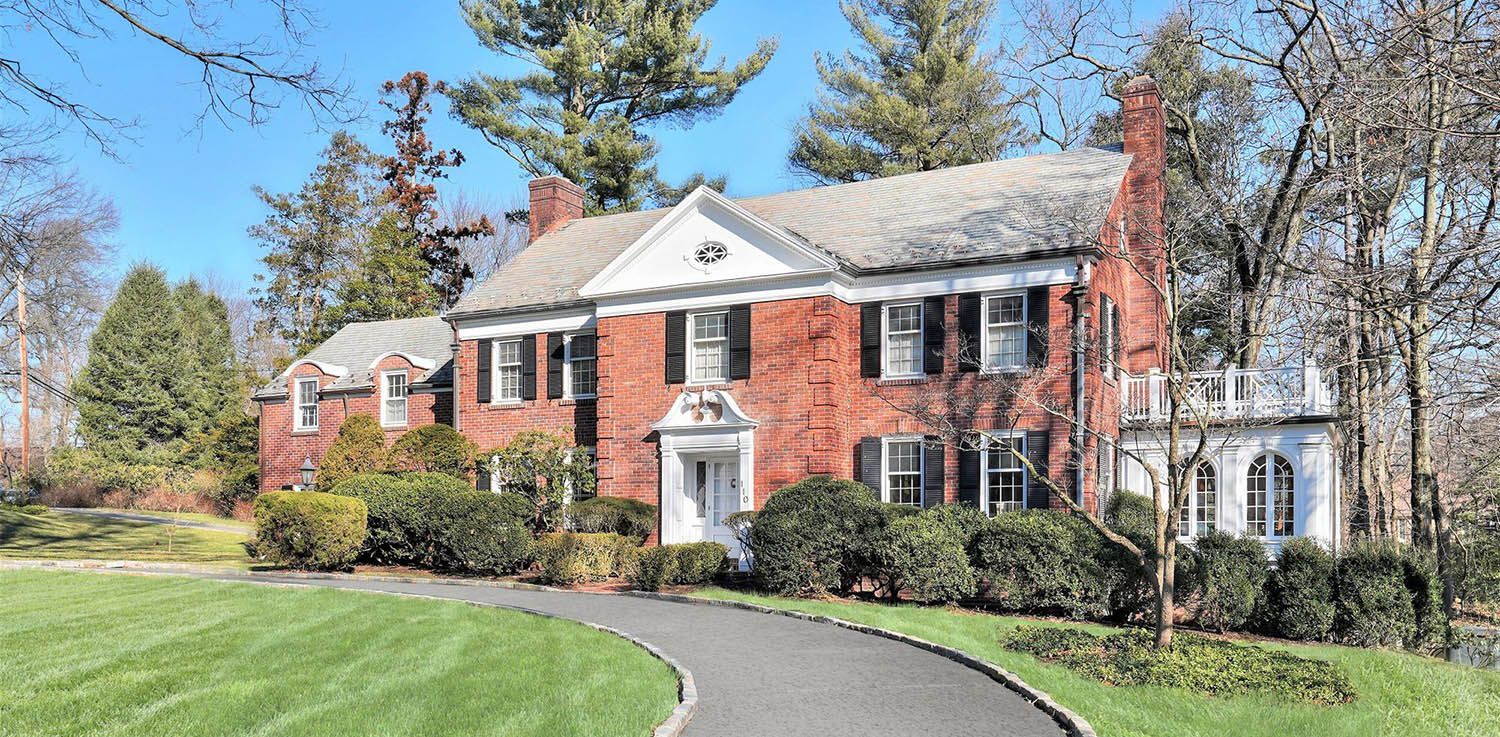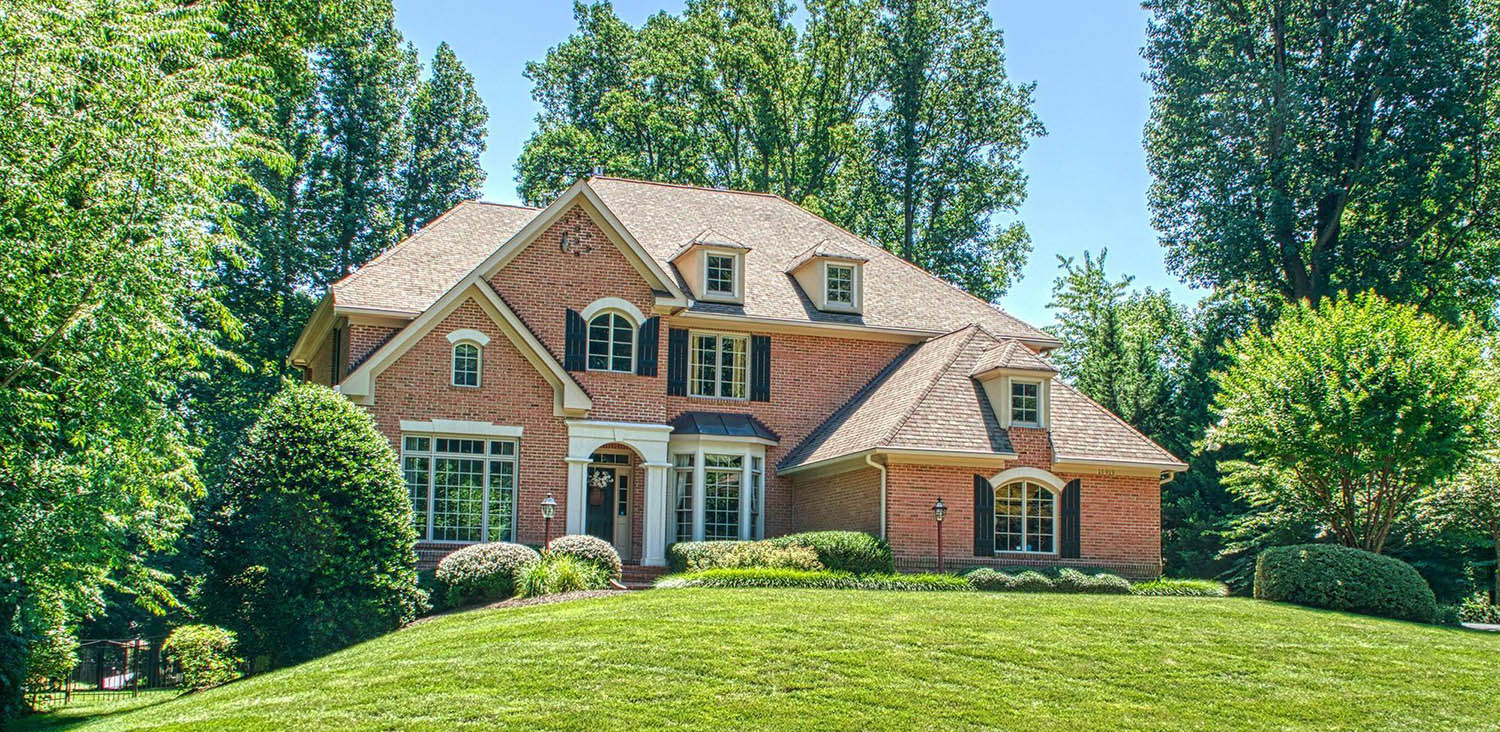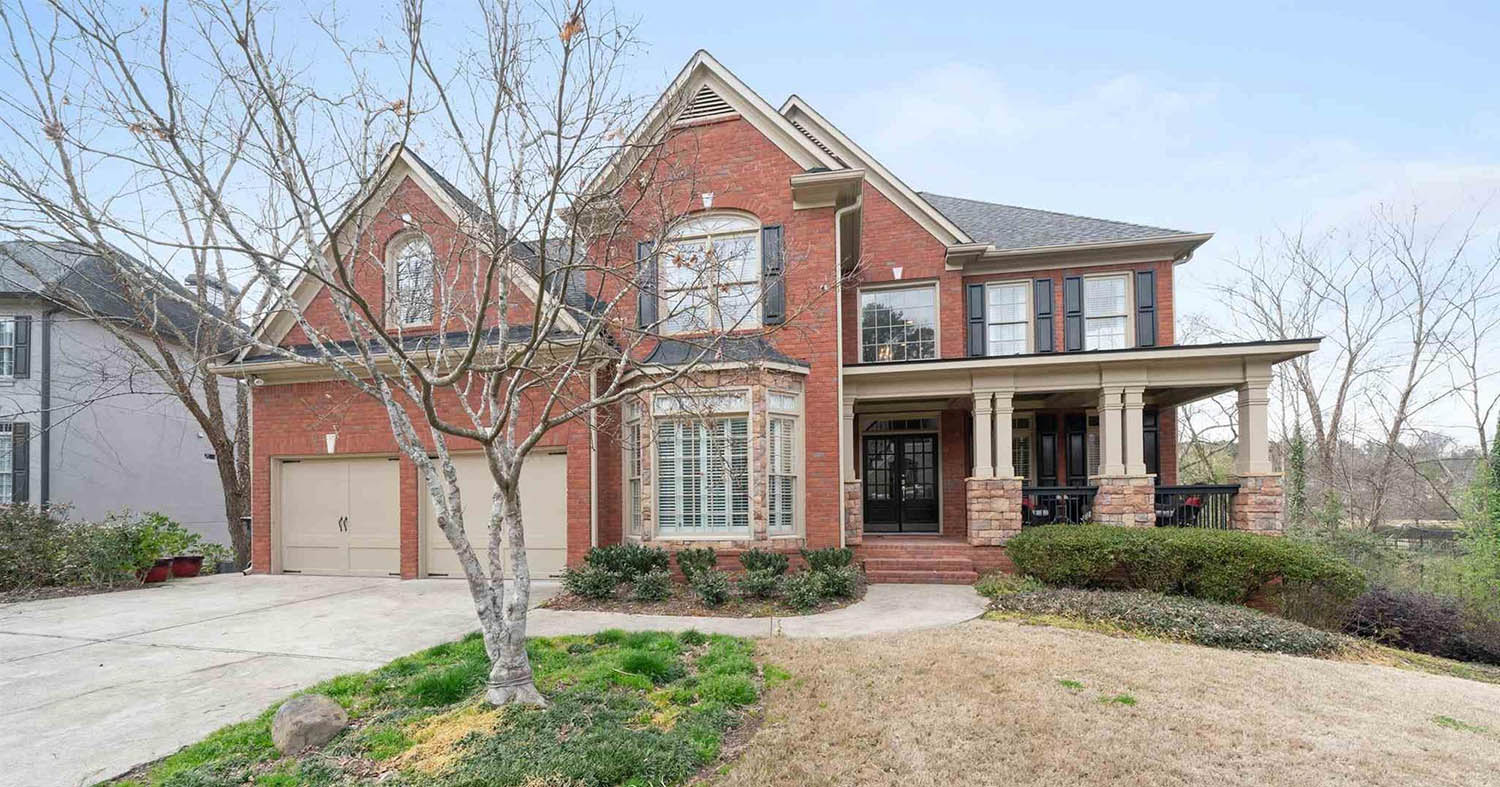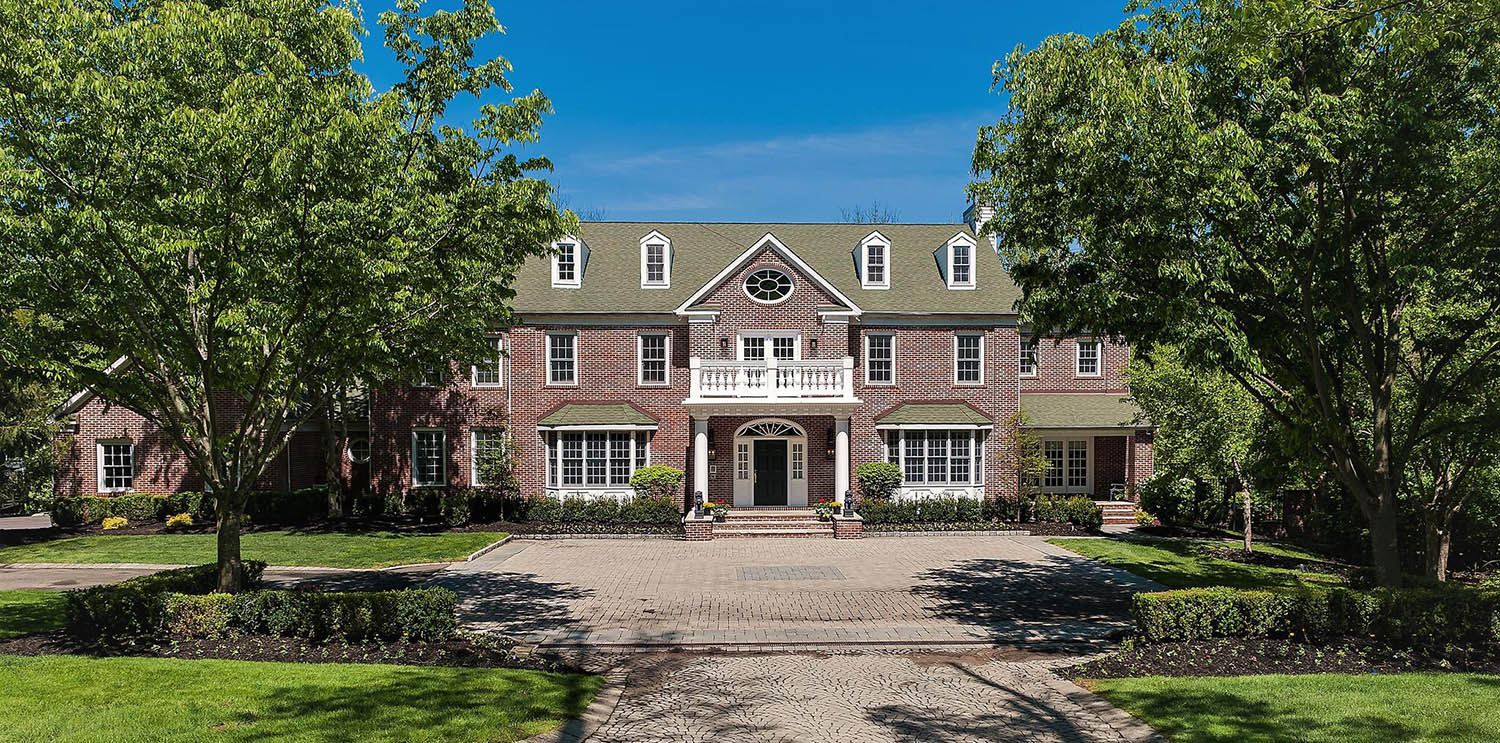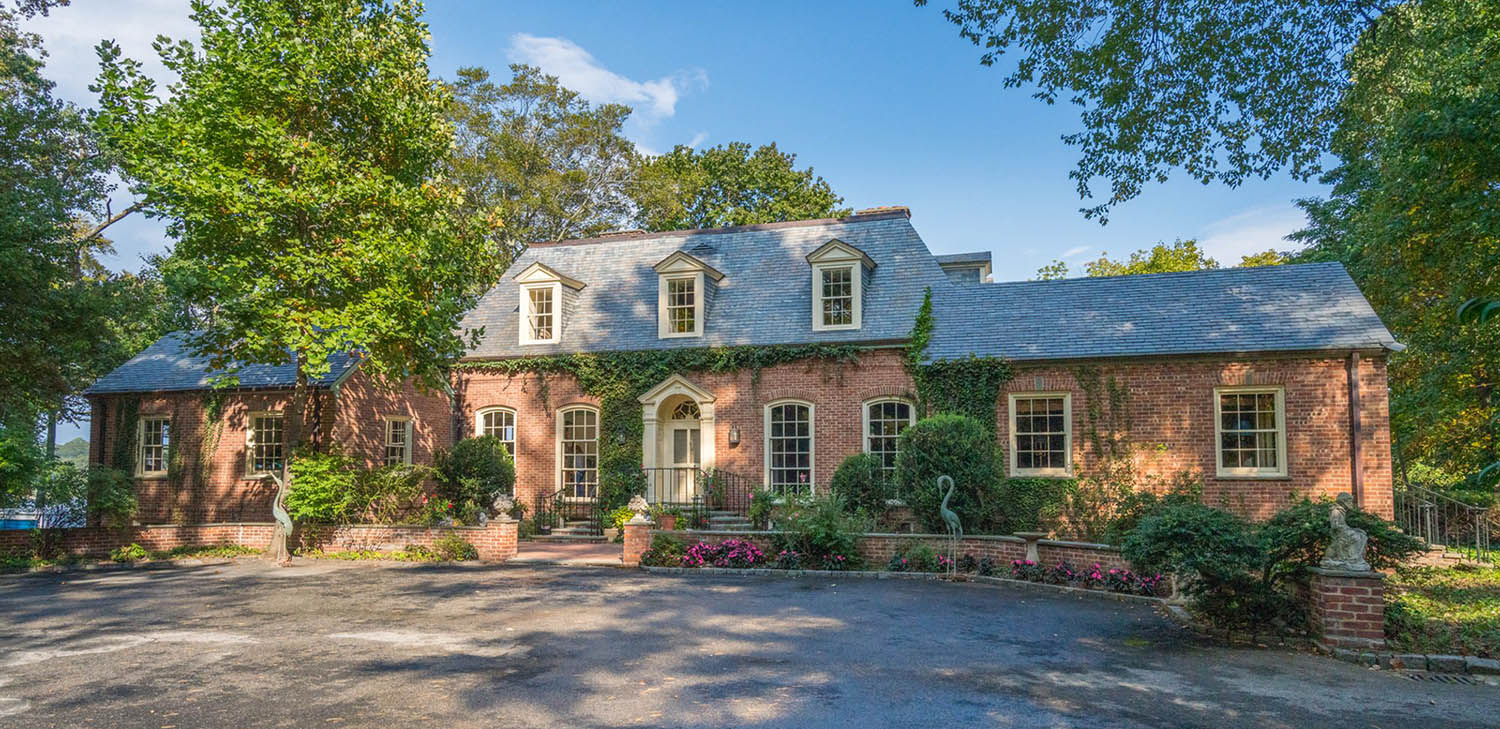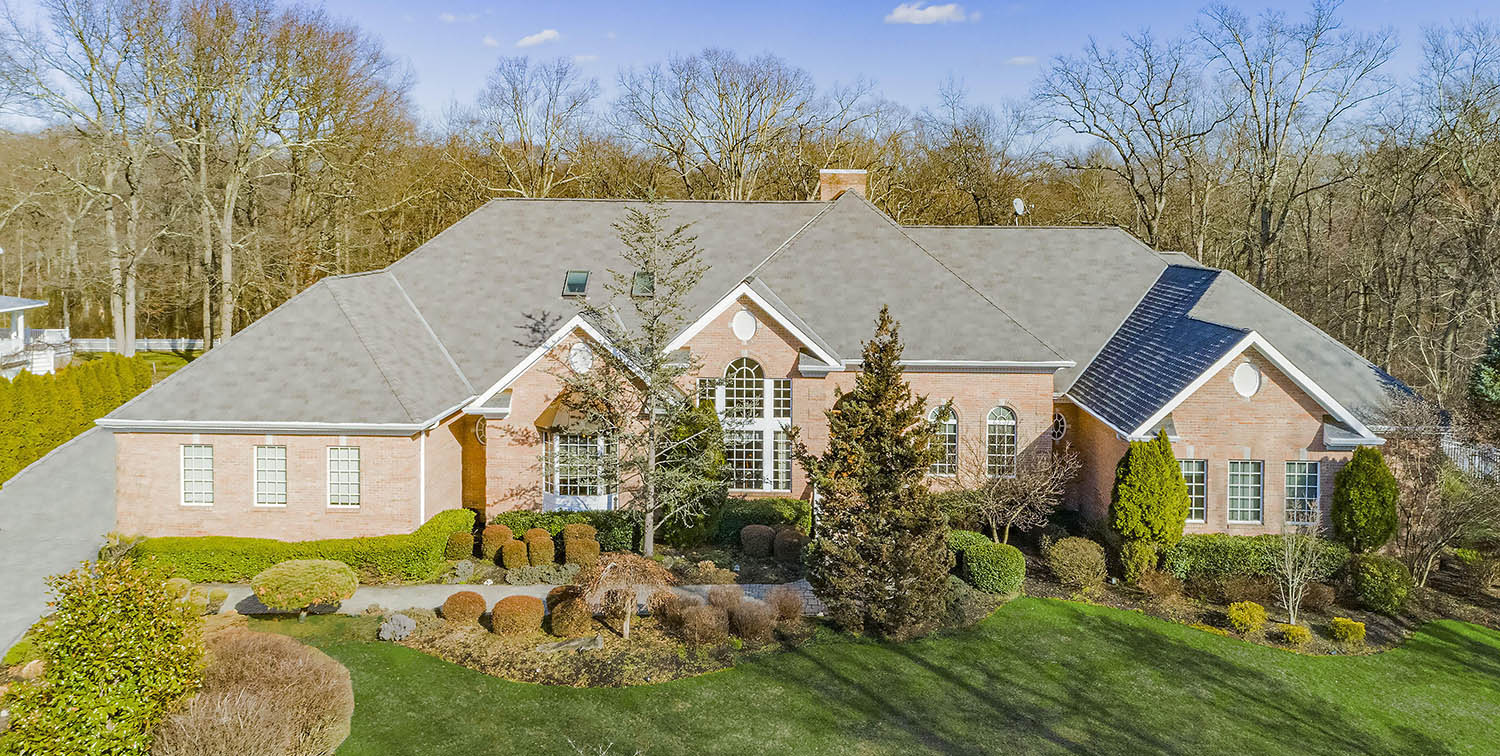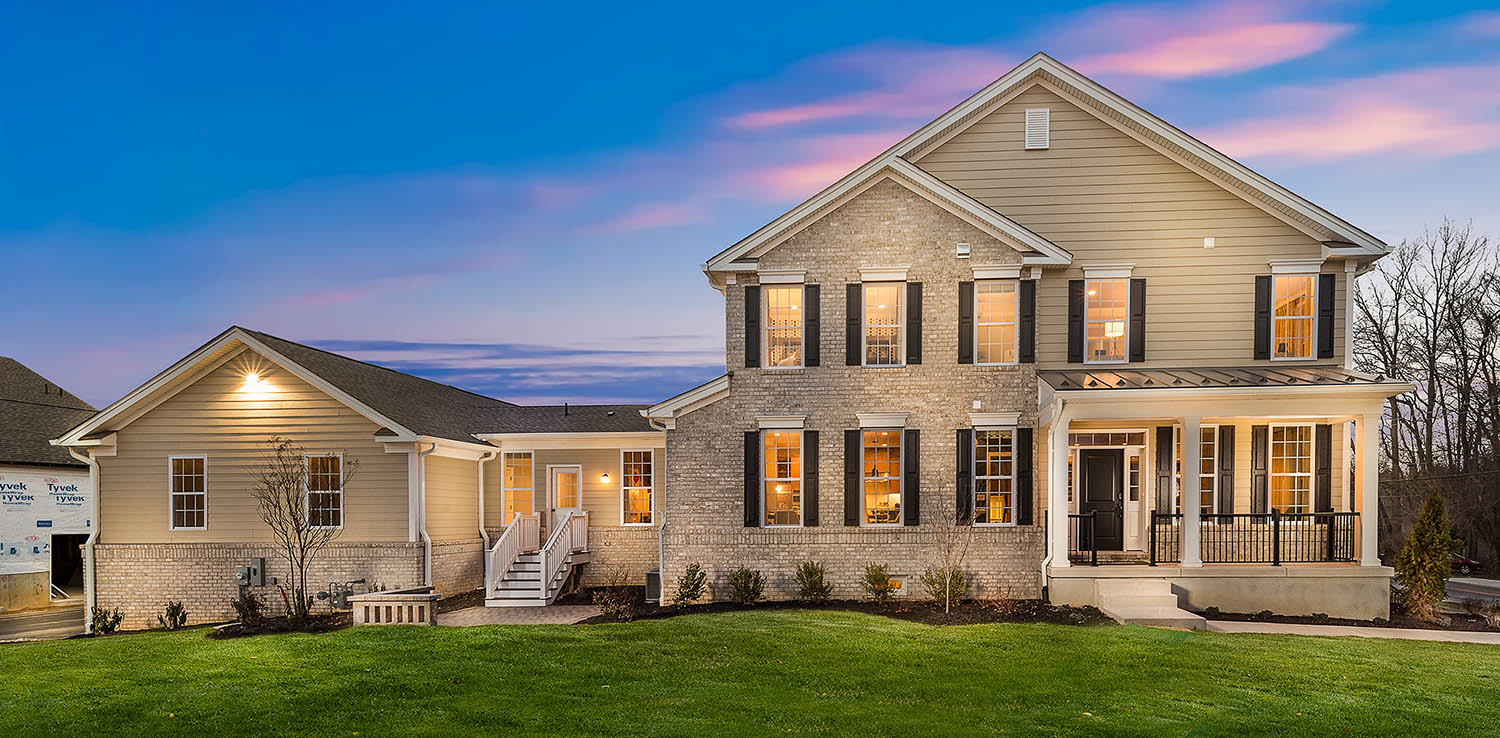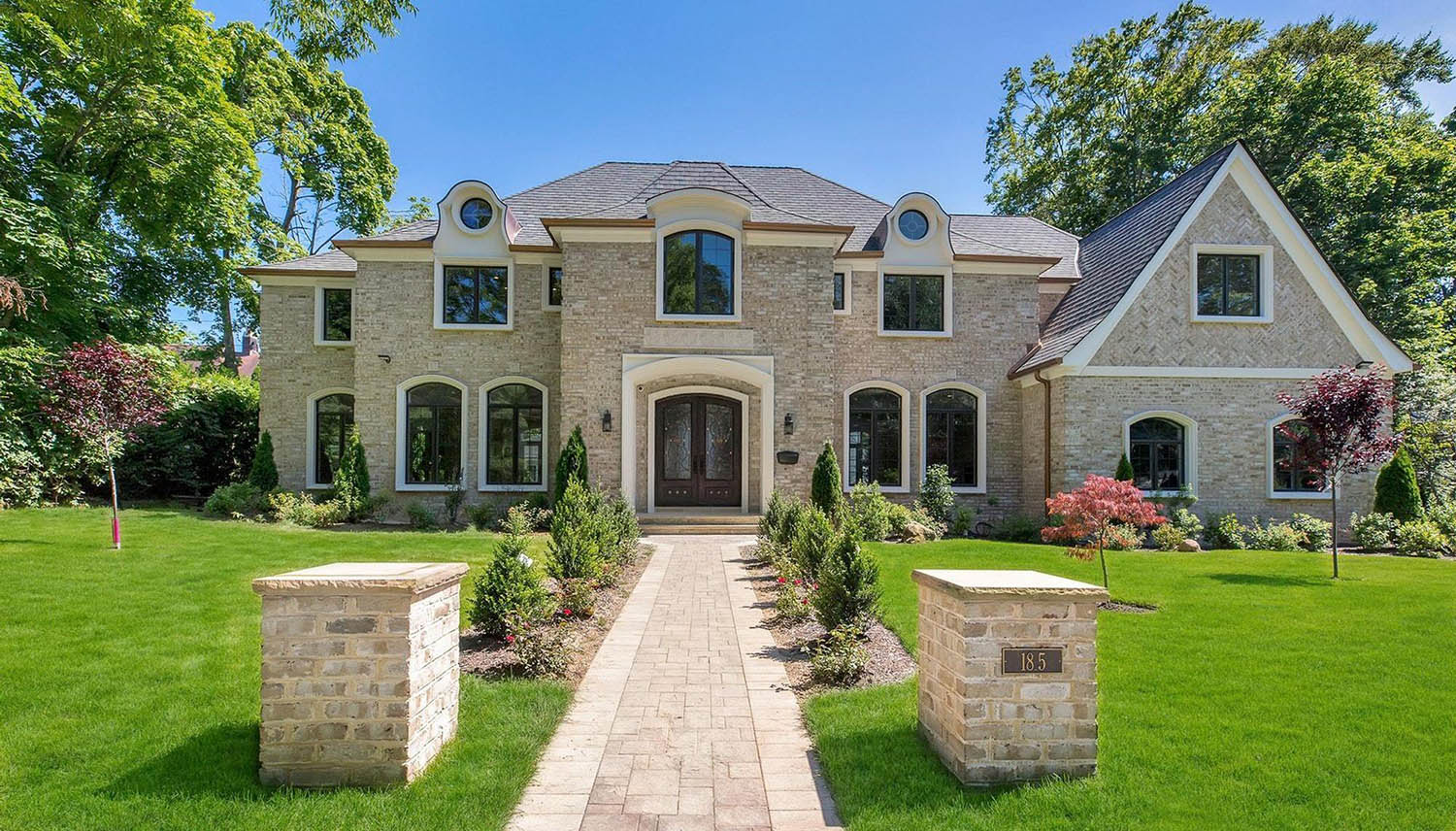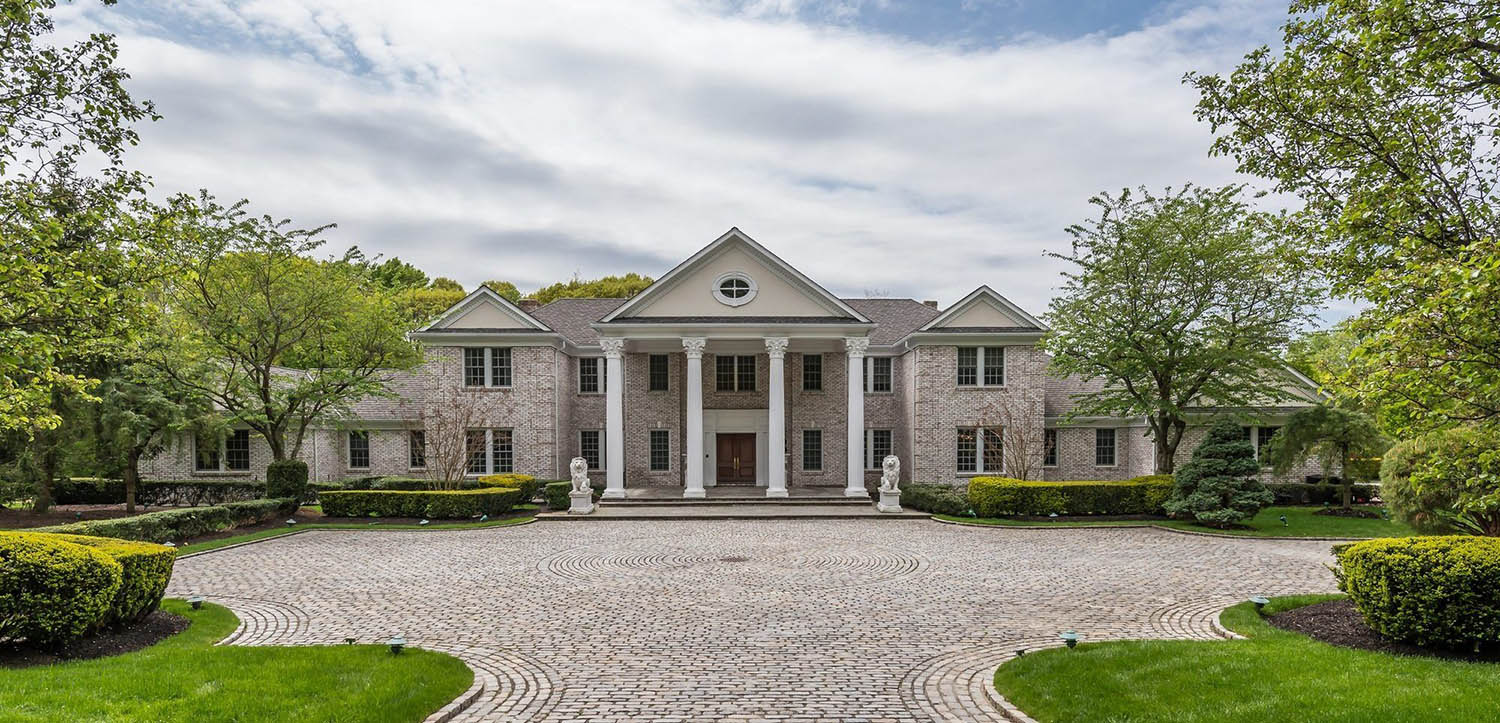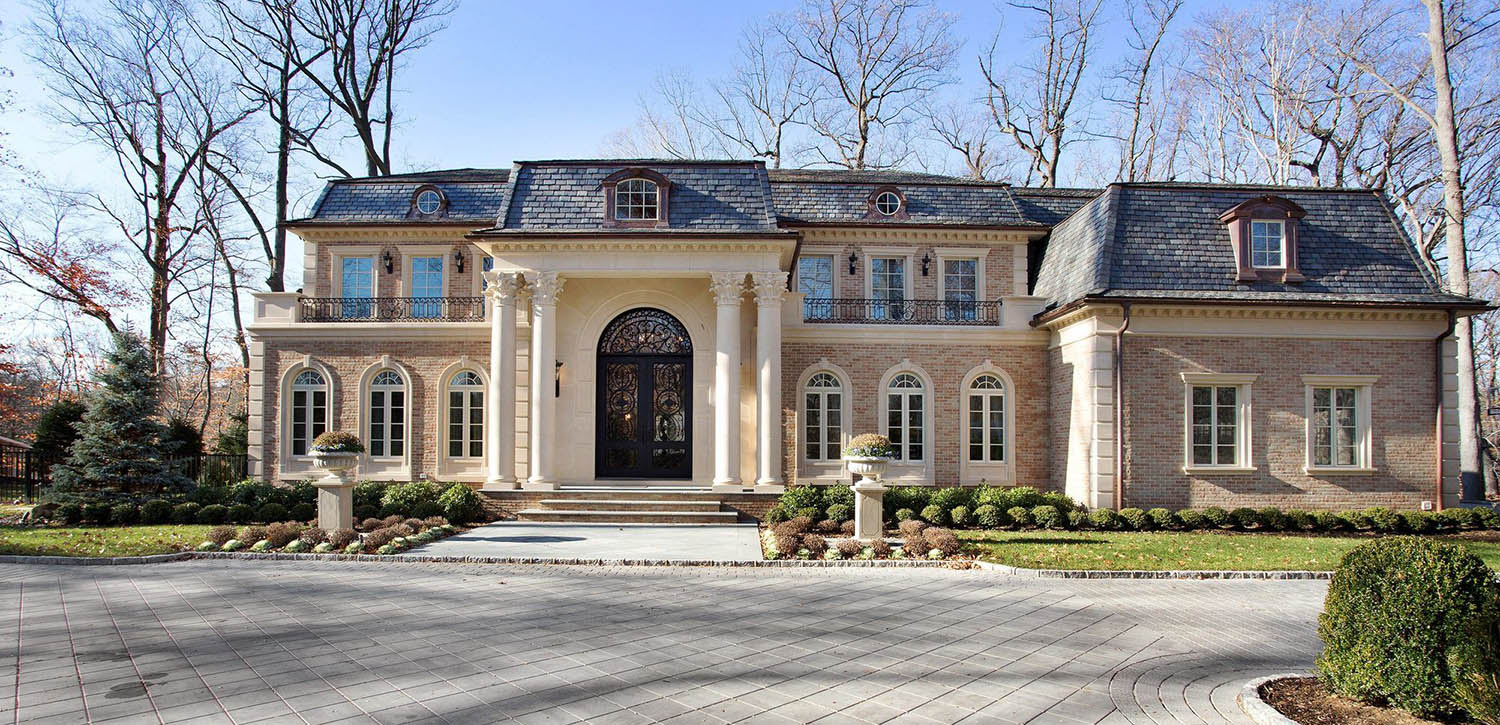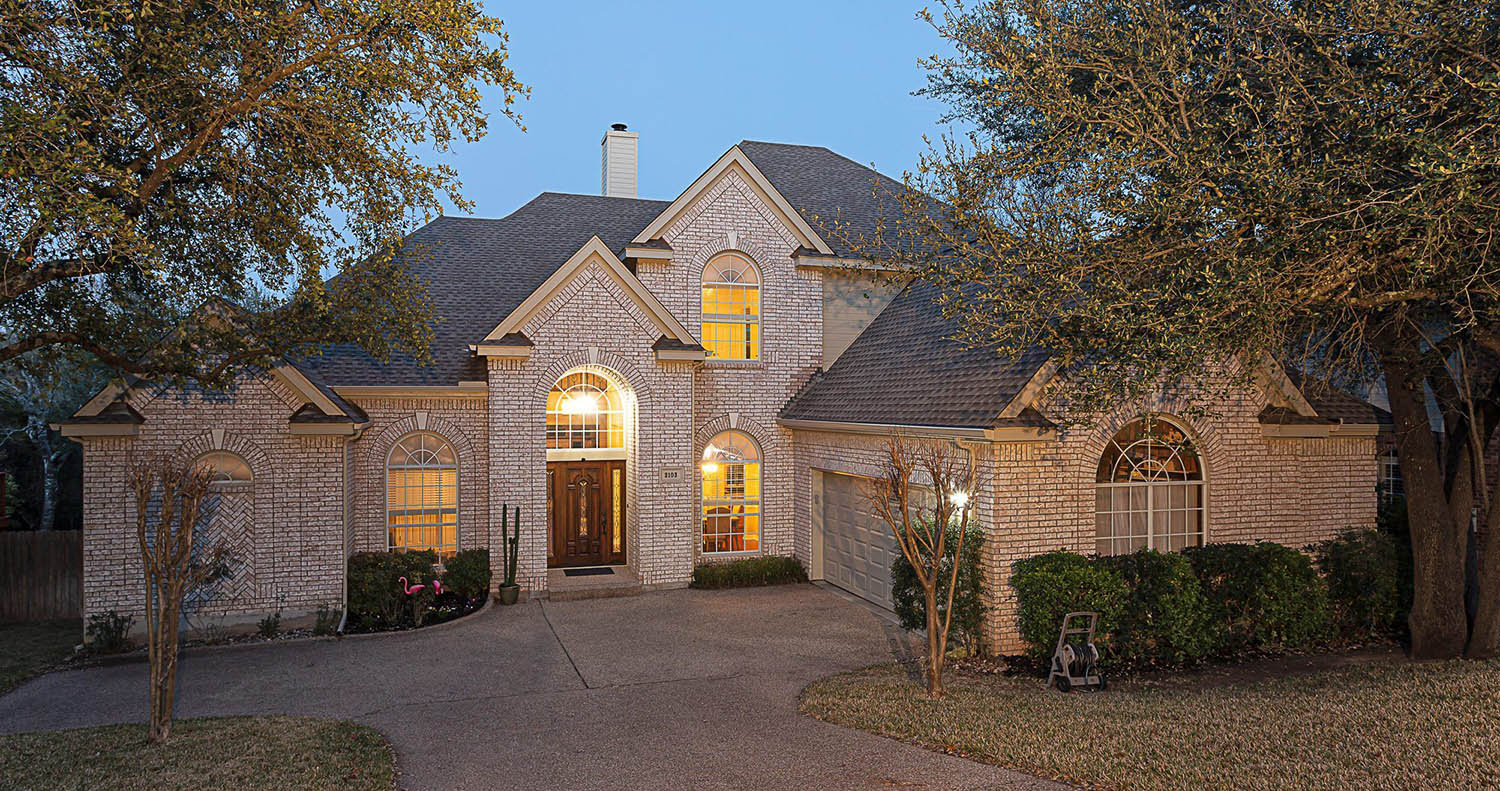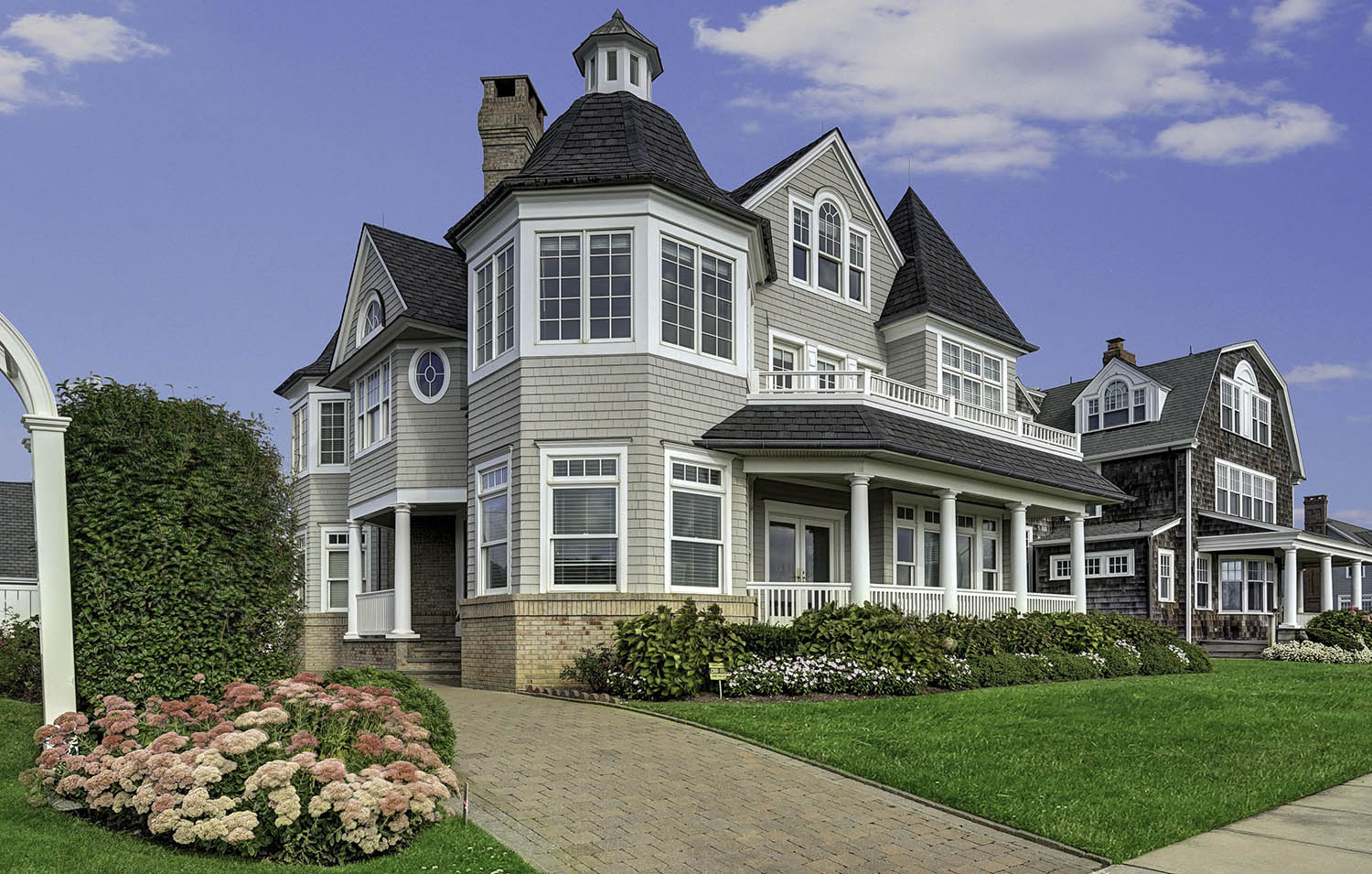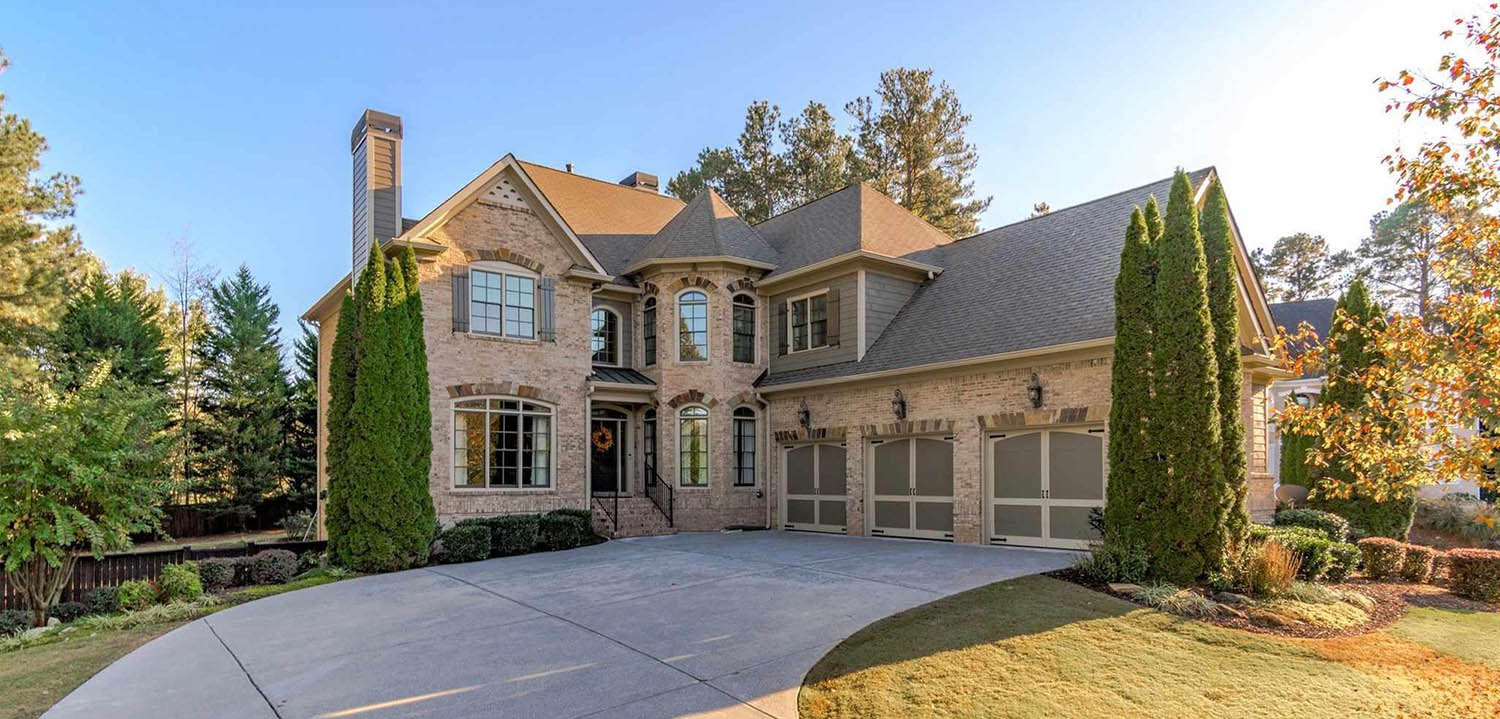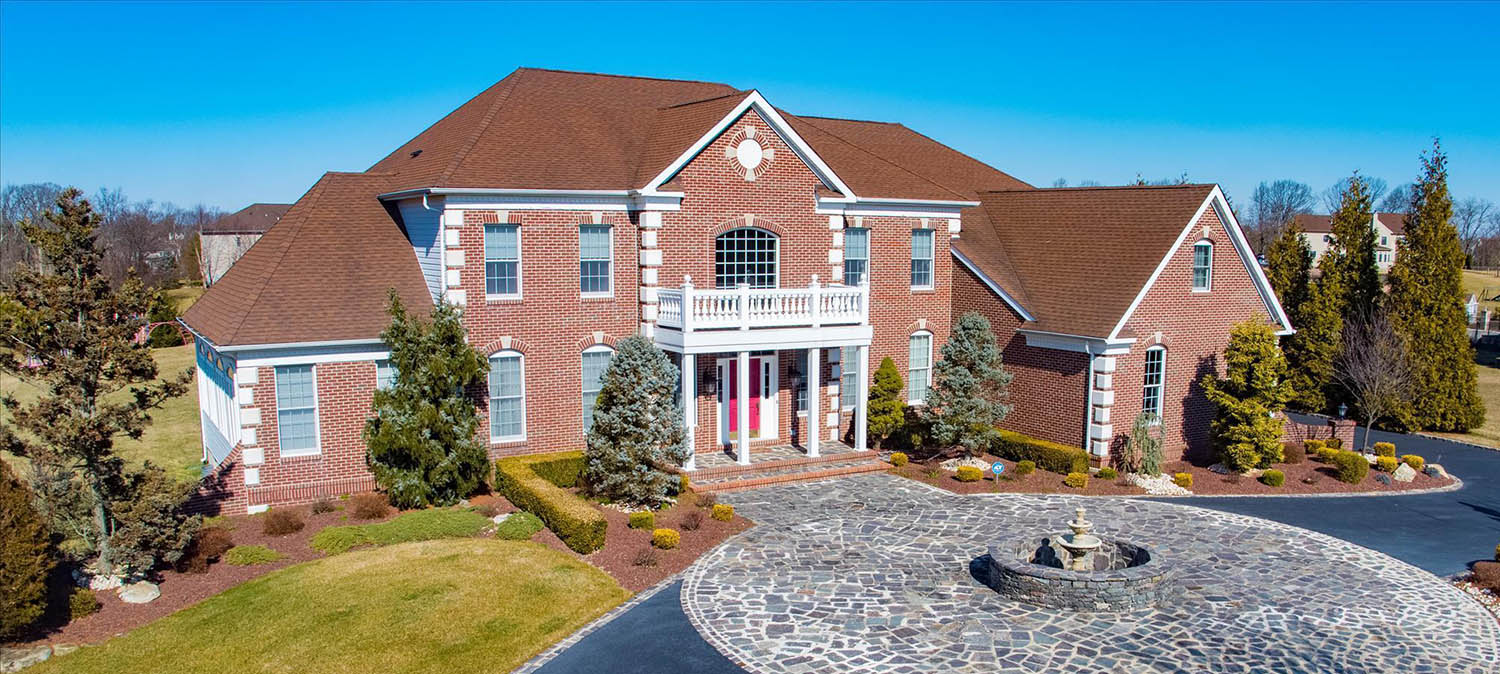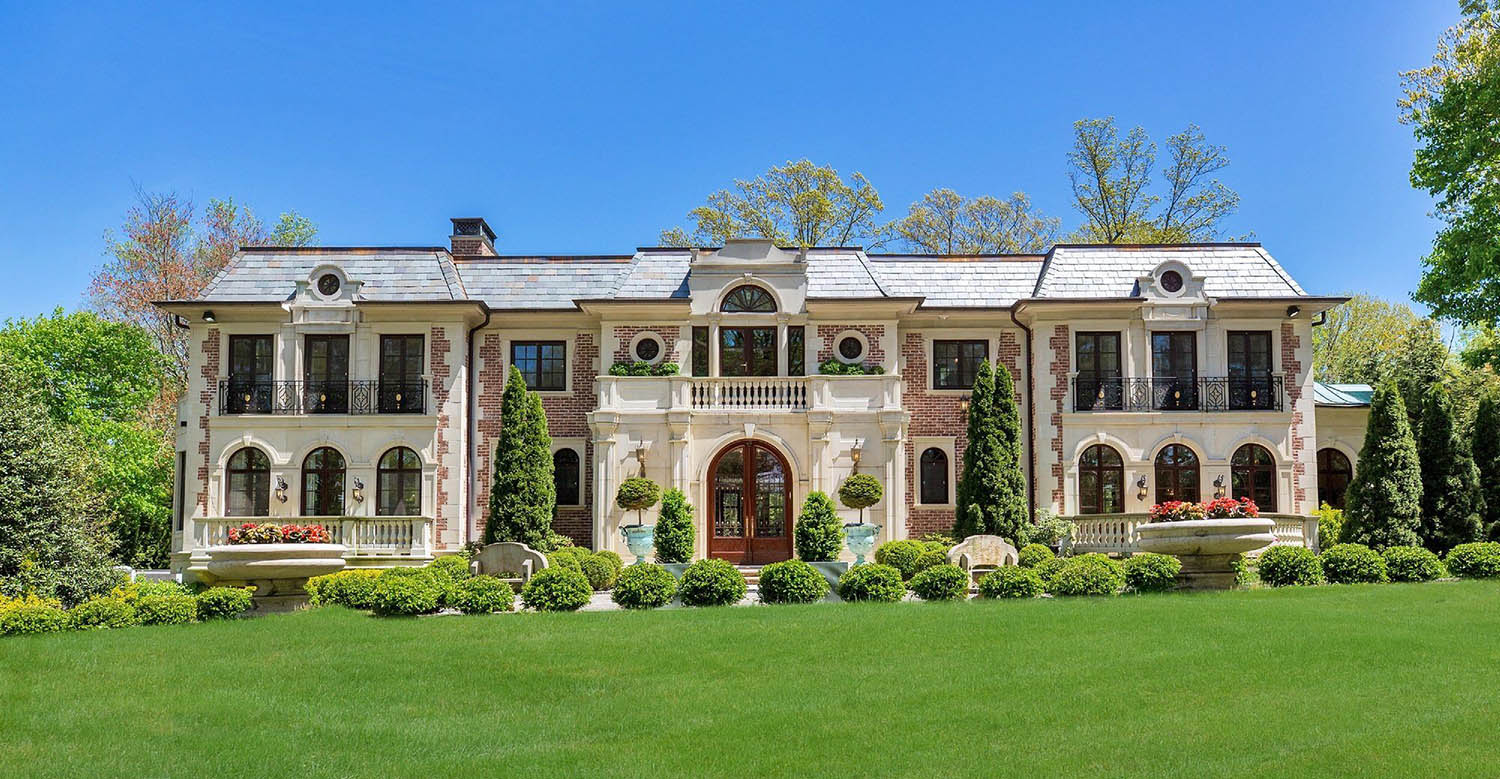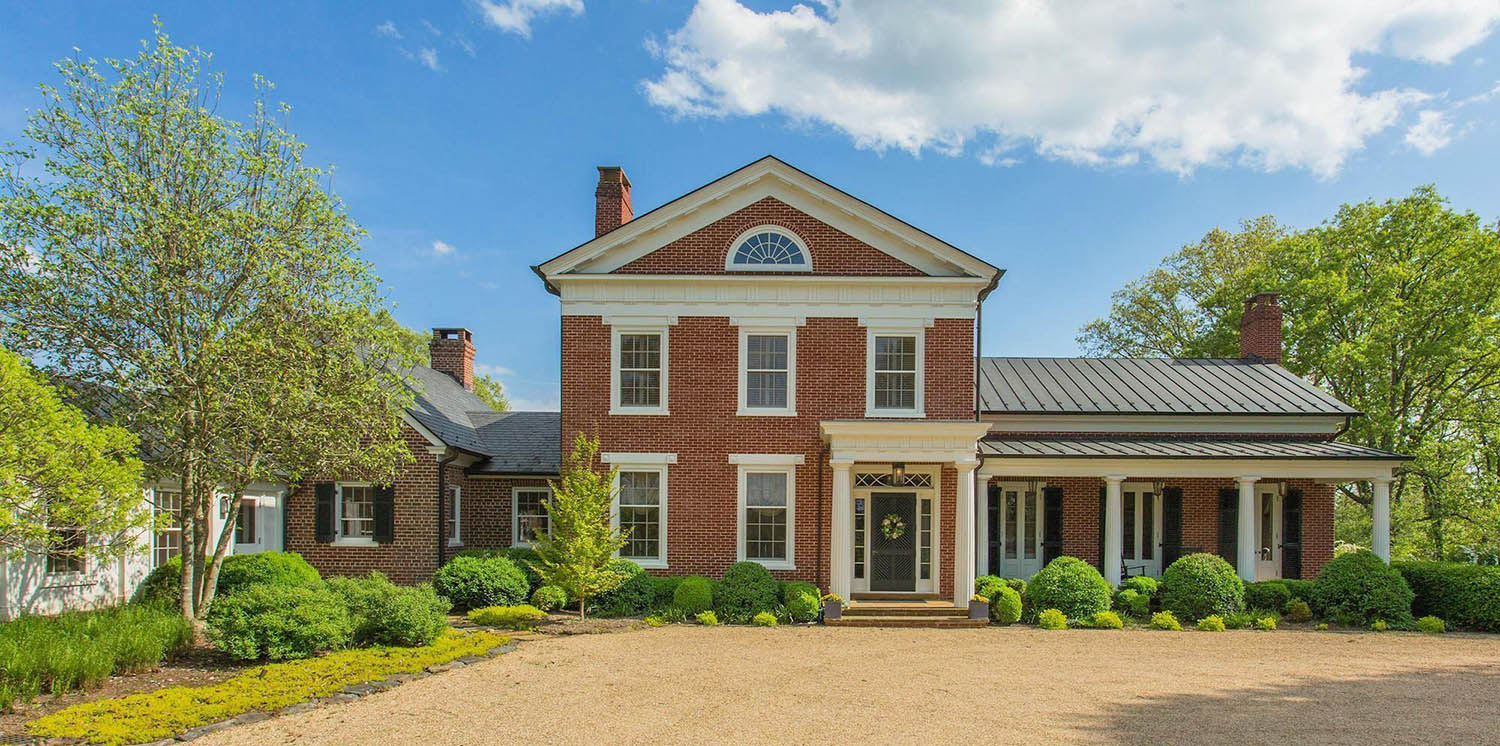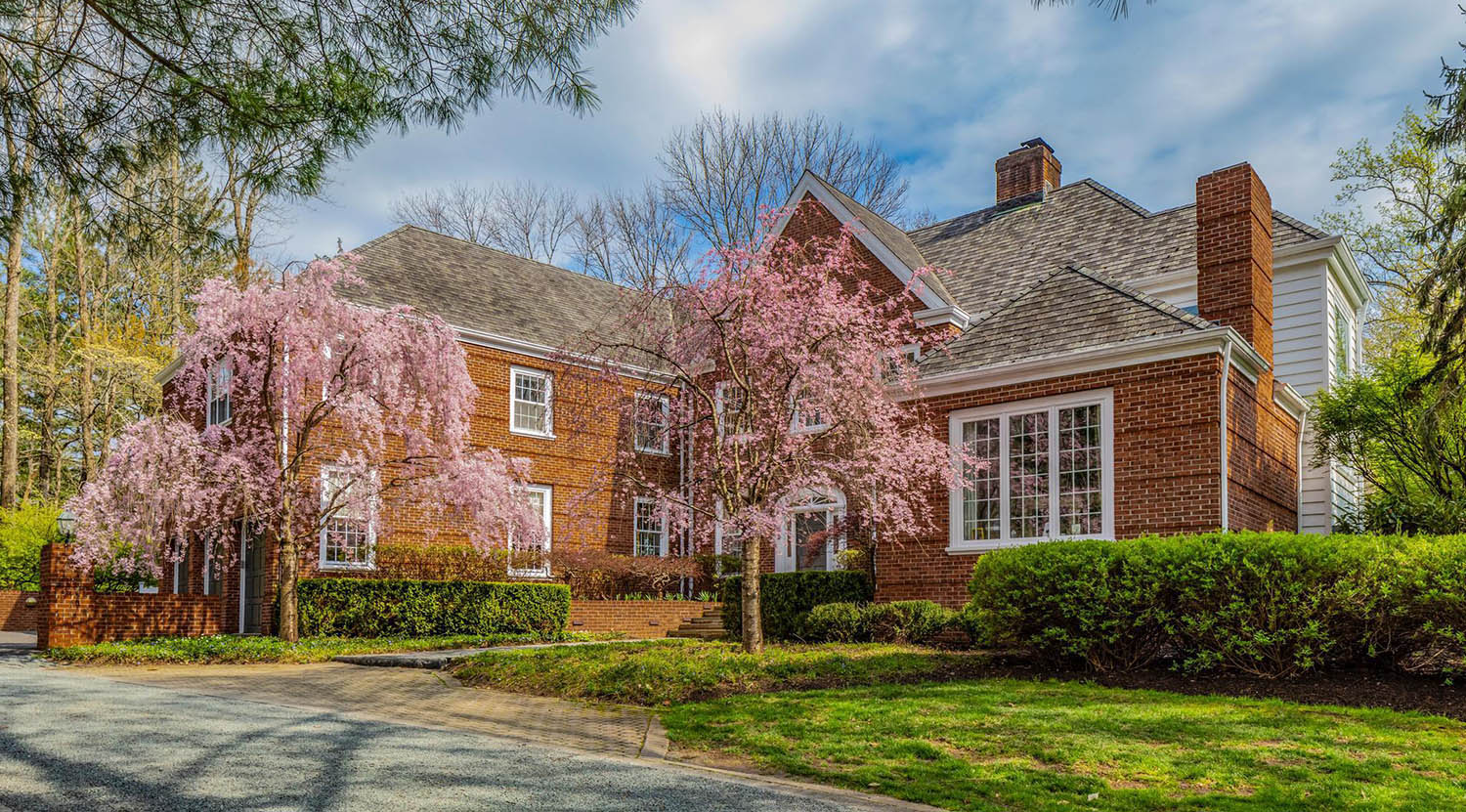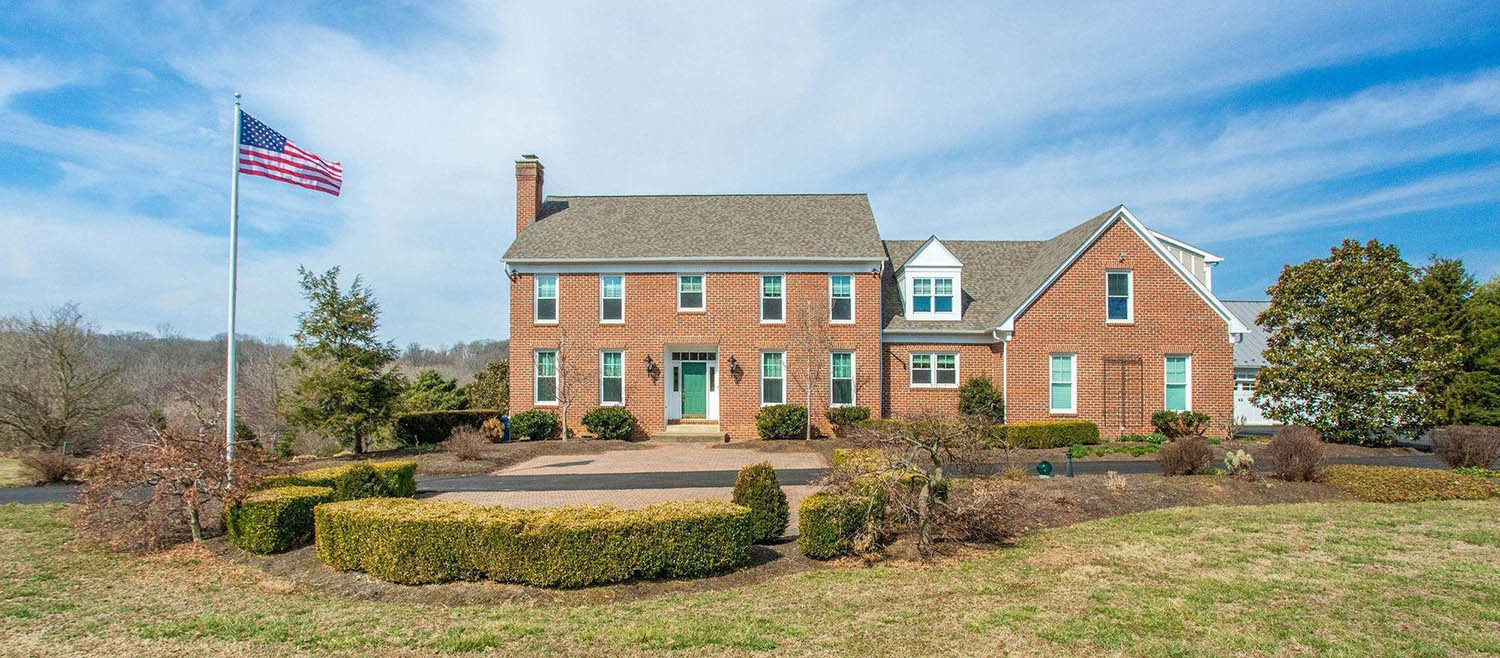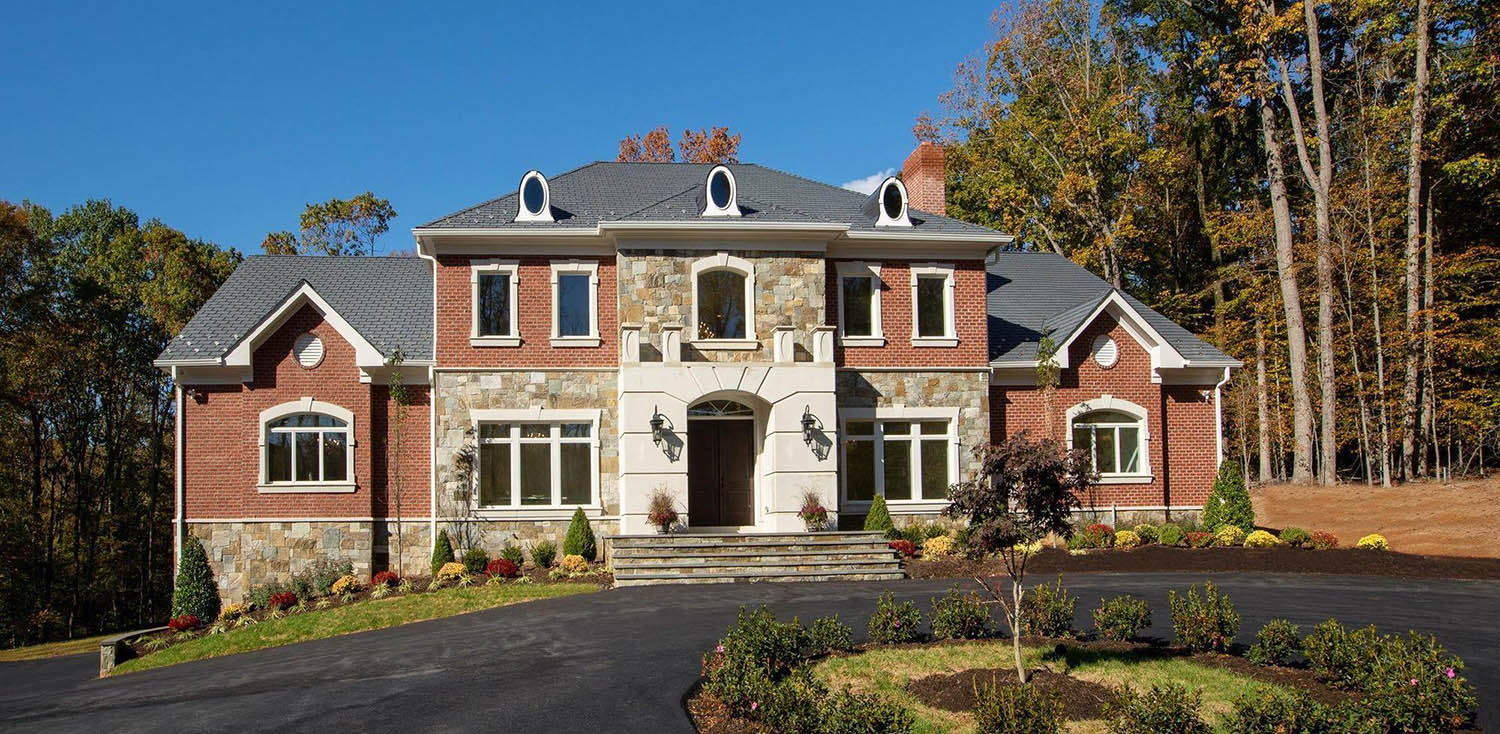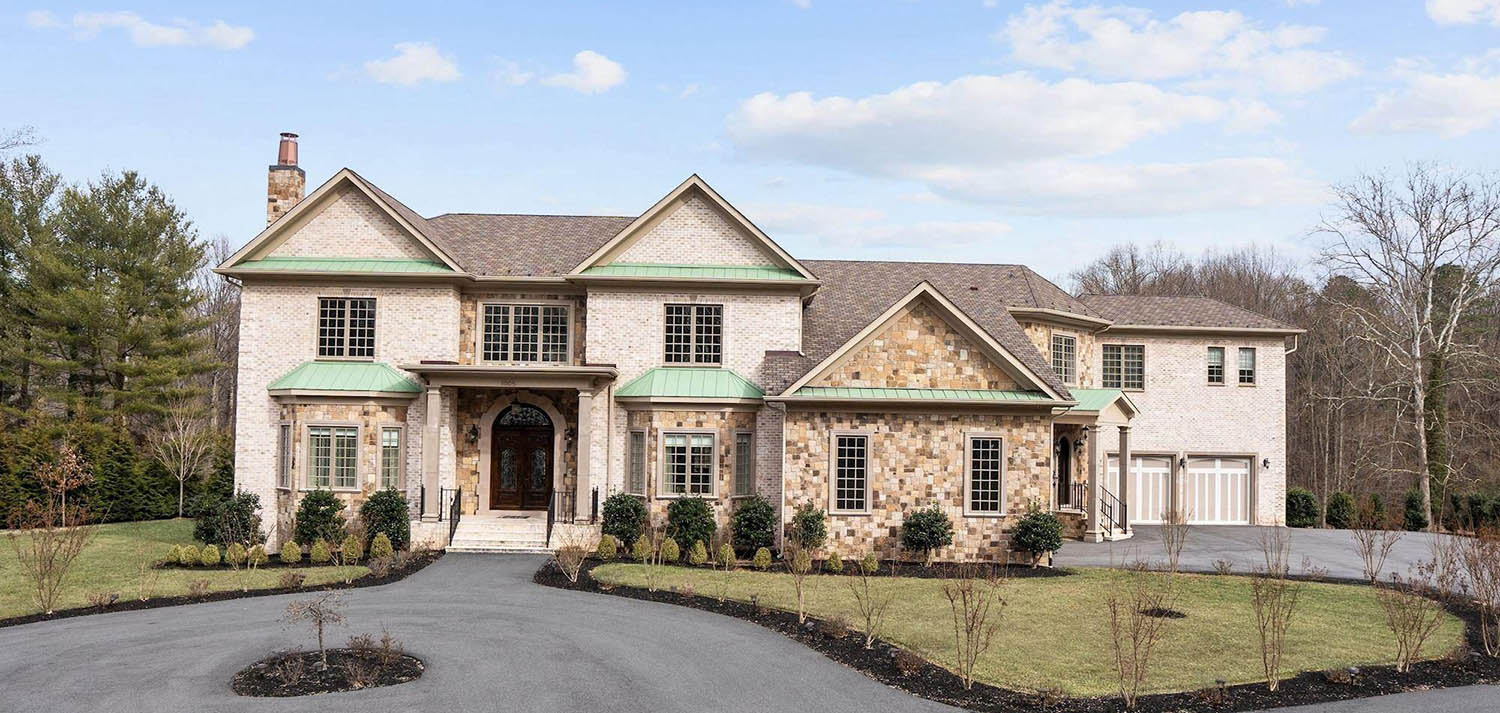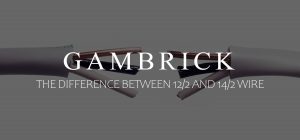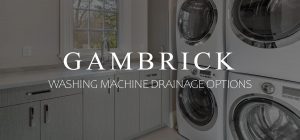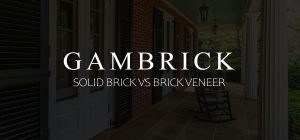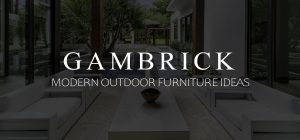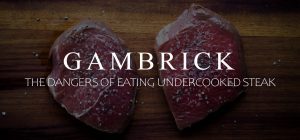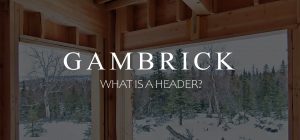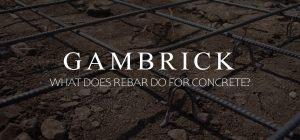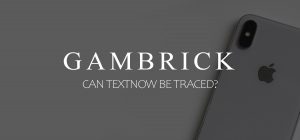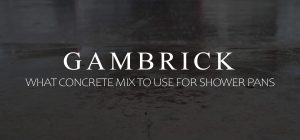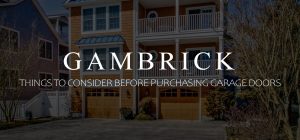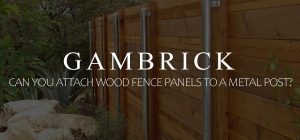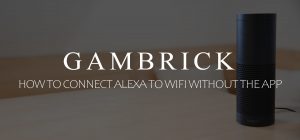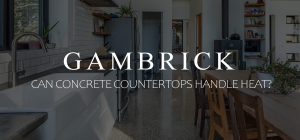Brick Homes Pros & Cons
I like the look of brick homes but have so many questions. Are they more expensive? Are they better? How long does brick last? And so much more.
If you like the look of a brick house but have questions then your not alone. We’re constantly being asked questions about brick. Brick homes have been a durable standard in the building industry for years. But as newer home siding options emerge, homeowners can choose from a wide range of exterior materials. Whether you’ve got a home with red brick, are planning to buy one or are considering building a new brick home, we can help. In this article we’ll answer all your most frequently asked questions about a brick home including a bunch of useful info you may not even know to ask. And we’ll go over all the pros and cons of owning a brick house. So is brick the right product for your home’s exterior?
The Benefits Of A Brick Home
Homes with brick siding are a popular choice around the world.
Around 32 percent of homeowners ranked brick as their number one choice for home siding. Vinyl siding comes in at around 20 percent. Stone at 12 percent, stucco at 10 percent, wood at 6 percent, fiber cement at 5 percent and other / combination at 15 percent. That’s a big lead for brick when compared with other popular home siding choices. And not only is brick a popular choice, but it holds it’s value and returns the most money at resale of any siding choice. This is due not only to the beauty of brick but also it’s durability and long lasting appeal. Unlike vinyl siding that fades or wood that needs constant painting, brick will look great for decades after it’s installed.
If you’re unsure about a brick home then we hope this article on the pros and cons of brick exteriors and all the information we provide will help you make a very important decision.
Brick Homes Have A Long History
The earliest known brick homes, dating back to 7000 BC in Turkey, were made mainly of clay blocks left to dry in the hot sun until they hardened. Ancient bricks were used to construct strong walls, floors, and bridges and were revolutionary for their time. Sun dried bricks remained the standard building material of choice until ancient Romans, around 3000 BC, began firing clay bricks in earthen kilns. This greatly increased their durability and strength.
Modern bricks we use today are made by an extrusion process. Low moisture clay and shale is forced into molds, allowed to set, and then cut into smaller sections to form individual bricks. Then the bricks are fired at a high temperature which results in strong bricks of uniform size.
Homes built with thick brick walls were common in Europe from the 14th Century up until a few hundred years ago when they were gradually replaced by wood framing which is generally much cheaper.
Early homes built in Colonial America often featured double brick walls. Bricks were stacked parallel to one another a few inches apart and the gap was filled with small rocks and rubble to create a thick wall that was strong enough to support a second story or overhead roof.
As wood framing advanced in the 1800s and became cheaper due to mass production, solid brick wall construction declined.
Modern homes are built with wood, concrete or metal structures, with brick being primarily used to create a beautiful exterior or decorative interior finish rather than as a load bearing wall.
Beautiful custom home with red brick exterior and a black front door.
Brick Is A Low Maintenance Siding Material
Unlike wood or fiber cement siding that require regular painting to keep their color, brick doesn’t need a thing. Because a brick’s color is baked all the way through the entire brick, the color is permanent and doesn’t fade like vinyl siding does and it doesn’t need to be painted. Of all the home siding options brick has the lowest maintenance to keep it’s beautiful look.
But there’s more to maintenance than just keeping your siding looking pretty. Brick’s won’t rot and aren’t easily damaged from impacts or storms. You also won’t have to worry about termites, carpenter ants or other pests gnawing at your siding. Just clean the bricks from time to time and make repairs if they’re ever needed.
And bricks don’t need to be sealed like stone veneer does to keep it’s color bright.
My family’s had a brick home for almost 30 years and have never done a thing to keep the brick’s looking great. They still look as good as the day we moved in. Although the neighbors have all re-sided their homes over the years, some multiple times, because of fading, rot, damage or just being tired of the constant painting.
Brick is a low maintenance siding material. So if you don’t want to do any maintenance then brick is definitely for you.
How To Keep Your Brick Home Clean
While brick homes are low maintenance and last for generations, regular cleanings are important if you want them looking their best.
No matter what shade, style or size brick you’ve got, if the bricks and mortar are dirty or have green mold growing all over them, then eventually you’ll have to clean them.
Brick and mortar both suffer from some of the same issues when it comes to cleaning. They’re both porous and prone to collecting dirt which leads to issues with mold growth. Especially on the sides of the house that don’t get much sun. Below, we’ll give you some links to our favorite cleaning products. Even though brick and mortar are both considered maintenance free they still require cleaning every now and then.
Brick And Mortar Cleaning Tips
- Clean your brick siding by spraying its surface with a regular garden hose fitted with a spray nozzle. A pressure washer isn’t recommended unless you turn the power way down. High water pressure can damage older brick and mortar joints. If the water pressure is uncomfortable to put your hand into then it’s set too high.
- Remove efflorescence, chalk like stains that develop on brick exposed to high levels of moisture and humidity, with full strength white vinegar. Spray the stains, wait 10 to 15 minutes, and then rinse with plain water from the hose.
- Use a good quality brick and mortar cleaner. They do a great job of cleaning the bricks and are easy to use. Just be sure to read the directions carefully.
- Scrubbing hard to clean areas of the brick is important and easy to do. Make sure to use a a brush with soft bristles as hard scrubbing can damage brittle brick or mortar. Scrub gently.
Our Top Brick And Mortar Cleaning Products
Red brick with white front porch and black door.
Bricks Are Weather And Fire Resistant
Bricks are naturally flame retardant and noncombustible which means they won’t catch fire. This can be a huge benefit if you’ve got brick walls inside the home because they act as a fire block to help contain or slow the spread of fire. This is one of the main reasons brick is such a great material for building a fireplace or chimney. There also one less thing that can potentially catch fire like wood siding can. And in the case of a house fire that doesn’t completely destroy the home, bricks generally remain undamaged. Whereas most other types of siding are destroyed with even small fires.
Bricks are very strong and add an extra layer of exterior home protection in a storm. Brick homes can withstand an impact from flying debris at much higher wind speeds than most other siding materials can. It’s a huge benefit, especially when compared with vinyl or wood siding that’s easily cracked from impacts. And bricks pull lose and won’t fly off from high winds like nailed on siding can.
Remember the 3 little pigs, the strongest house was made from brick. Because of these additional safety features, many insurance companies offer lower homeowners insurance rates for homes with brick exteriors.
Beautiful red brick home with stucco accent and white trim. Black front door.
Bricks Offer Home Soundproofing
Bricks offer soundproofing to the home because of how thick and dense they are. Other types of home siding like wood, stucco, vinyl and fiber cement don’t do nearly as much. If you’ve ever been in a city brick building you’ll know how much quieter the inside is compared with the standard home.
And the soundproofing doesn’t just keep street noise out but also helps keep inside noise in. If your having a loud party and don’t want to disturb the neighbors then a brick exterior can help.
Home soundproofing benefits not only light sleepers but also people who just like their privacy.
Bricks Are More Energy Efficient
Bricks are a thick, dense material that offers a bit more insulation than most siding types. A 4″ brick has a .80 R-value which may not sound like much but it’s a bit more than what’s offered by vinyl, wood, stucco and fiber cement siding. And some brick installation =s include a layer of rigid foam insulation behind the brick which adds even more insulation.
And energy efficiency isn’t all about R-values. Bricks absorb and store heat which can be a big benefit in winter if some of those exterior bricks extend into the home.
Bricks can help stabilize temperatures inside the home because a thicker exterior wall delays the movement of heat through the wall. In summer, the heat stays outside, and in winter the heat stays inside. This can save you some money in the long term, because as we all know, heating and cooling a home is expensive.
Beautiful tumbled red brick home with formed cement trim and a stained wood front door.
Red Brick Increases Resale Value
Even though brick is a more expensive way to side a home than most other materials, they increase the value of the the home and save homeowners money on maintenance costs. When customers ask us if a brick home is worth the money, the answer is yes. They’re are so many financial benefits of owning a brick home that need consideration. How much do you save by not having to paint the home every 3-5 years like you do with wood or fiber cement siding? How much will you save on repairs if you live in an area prone to bad storms? And how much will you save by never having to reside the house?
Brick is a rich look that typically brings up the curb appeal and value of the home, especially at the high end of real estate values. But brick should be used in the right neighborhood where the look and extra up front costs make sense. It’s not a one size fits all solution but in most cases a brick exterior is worth the money.
A variety of red bricks laid out next to one another. Bricks come in a variety of styles, sizes, colors and textures.
Brick Exterior Options
Because brick is a man made, molded material, they come in a variety of shapes, colors, and styles. Each brick is unique, giving every brick home a one of a kind exterior. This is a big difference when compared with other siding options like vinyl that come prefinished. With brick you can work them to create different patterns and designs not to mention all the accessories available to a brick home that aren’t with siding. Like the formed cement trim pieces shown above. You could never achieve a look like this with siding.
Bricks Come In A Variety Of Shapes, Sizes And Colors
Many customers don’t realize how many different styles, colors, sizes and textures brick comes in. Ranging from white to black including shades of red, orange, tan, gray, rust, brown, and other earthly hues. Multicolored bricks featuring two or more complementary or contrasting colors are also available.
And there are often variations in color within each individual brick that varies from brick to brick, even if the bricks are from the same palette. Brick is a natural material so unlike siding, it’s rarely one solid color.
When up close you can pick out lots of different shades and small details. From far away, however, the brick will appear to be one solid color. The farther away you are, the more solid color the bricks will appear.
When choosing the perfect brick for your new home or if your matching other elements to your existing brick, consider the following.
- The various colors in each brick. Often times brick has spots of other colors in it like grays, deeper reds or even blue tones. Consider the brick’s texture. This is an up close issue.
- How the color changes from brick to brick. Are they all exactly the same or do the colors vary a lot. What’s the texture like. Smooth or rugged. This is a medium range issue.
- What’s the overall color of the red brick. In other words if you stand at the curb and see it as one big block of color, what color do you see? This is a far away issue.
When your designing the exterior for brick homes, you have to consider how the bricks color will look from a variety of places. Curb appeal is a major consideration but so is how the home looks when up close.
Brick Has Varying Texture
The texture of a brick face, the side that faces outward, can be extremely rough, smooth, or somewhere in between. While classic red brick has been in style for over a hundred years, other colors are popping up in new housing developments all over the country including white, gray, tan and even black.
Homeowners can even customize the look by considering a variety of custom mortar colors. Simply adding a powdered pigment into the mortar mix creates a wide variety of colors.
Classic red brick home with large white columns and white trim.
Architectural Details Of Brick Homes
The standard bricks used for most residential siding, known in the building industry as “modular” or “face” bricks, are uniform in size. The standard brick size we use is 3-5/8” wide, 7-5/8” long, and 2-1/4” high. Brick sizes aren’t like lumber where sizes can vary slightly from piece to piece. Bricks sizes are all very accurate because they’re made in molds.
Brick joints are also very uniformed although the size is determined by the designer and brick layer. Allowing for 3/8” mortar joints, which is the standard size we use, we get seven bricks per square foot, installed.
Unlike bricks used for paving, exterior bricks aren’t always solid. Some brick’s have three vertical holes in the middle that allow mortar to seep in which creates a stronger bond.
Brick siding usually includes a membrane, such as a vapor resistant house wrap like Tyvek or tar paper, over the home’s sheathing. When we install the brick we generally leave a narrow air space between the membrane and the bricks. This allows some space for air flow and an area where water can drain if it gets behind the brick.
During construction, brick siding is secured to the home’s frame with metal anchors, known as “brick ties.” Mortar creates the uniform joints between bricks. Small holes, known as “weep holes,” are located along the bottom course of the bricks to allow any water that gets behind the bricks a place to drain out.
Laying bricks requires skill and experience and should be left to a professional brick layer and not your regular mason. This is definitely a specialty trade that requires a trained pro.
Brick Homes Are Eco Friendly
Bricks are made from some of the most abundant materials on earth, clay and shale. Which makes them a completely bio degradable and recyclable building material. Nothing else even comes close other than wood.
Bricks can be reused for other construction projects, like retaining walls, walkways, or inside the home where older bricks can still be used because they won’t get weather damaged. Interior brick is very popular these days on more than just a fireplace. Customers are using red brick all over the house, even as a kitchen backsplash or accent wall.
Brick can even be ground up and used as a sub-base material or chipped into small pieces for landscaping mulch. The pieces absorb moisture better than any other base material which helps minimize the buildup of mold and mildew.
Repurposed brick is a very popular building material for all types of applications inside the home. Many designers use like to use older bricks because they have a look that newer products can’t match.
Old bricks can even be cut into thin slivers and made into brick veneer that gets installed just like tile with a trowel and mortar.
Beautiful red brick home with stucco trim and a stained wood front door.
What Are The Disadvantages Of Brick Homes?
While a brick exterior is a great feature to have with a wide variety of benefits, there are still some potential drawbacks. After all, no building material is perfect.
Brick Is More Expensive
Brick is generally more expensive than other home siding products, such as vinyl siding, fiber cement, stucco, metal or wood. This is due to the increased labor costs associated with brick installation. The bricks themselves are fairly cheap but the labor costs can be very high. Especially as you install the bricks higher on the house. Scaffolding needs to be installed and ways of delivering the bricks and mortar have to be worked out. Not to mention hiring skilled brick layers. It’s a lot harder to do than just nailing strips of vinyl siding to the wall.
Brick is relatively expensive. Nearly twice as expensive on average compared with other types of siding. Vinyl siding costs $4 to $10 per square foot to install and wood siding runs $5 to $12 per square foot. Professionally installed brick siding will will cost you an average $8 to $20 per square foot to install. This all depends on the home and exterior design. To get an exact difference contact local pros for bids.
When it comes to building brick homes, use only top quality bricks. There are less expensive bricks that tend to be more porous. This can eventually lead to water penetrations and cracking when water gets inside the bricks and freezes. A good quality, dense brick is what you should use for the exterior of a home. If your buying a home with brick make sure you inspect the brick to make sure it’s of good quality.
Even if the brick is old, a good quality old brick will last longer than a poor quality new one.
Brick Homes Have Color Limitations
Bricks do come in a variety of colors but choices are limited when compared to siding or stucco. Especially when compared with wood or fiber cement siding that’s painted as these types have thousands of color options. A brick’s color depends on it’s composition and the temperature at which they were made. Once a brick’s been created the color is baked in and can never be changed. Unless of course you paint them but that’s a different article altogether.
Because bricks come from a mix of clay and shale, your color options are limited. Some color is added into the mix during production but generally speaking most of your choices will be a shade of red.
Brick Mortar May Eventually Need Repointing
While bricks are an extremely durable building material, the mortar used to stick them together, which is referred to as pointing, can become an issue.
Pointing isn’t as durable as the brick and can wear out over time due to the elements, especially when installed improperly. This is one of the reasons why it’s so important to hire a professional brick layer for all your brick work and not just a regular mason. Laying brick is a specialty.
Repointing may be needed over time. This involves gouging out the old mortar wherever you find damage and installed new. It’s a time consuming process and time is money. The major issue with repointing your brick is matching colors. The new mortar color will be hard to match with the old so if you don’t repoint the entire home you’ll see the new mortar. To help with this make sure you use the same type and color mortar as the old stuff. This way when the new mortar starts to age it’ll blend in with the old.
A mason can repoint bricks by removing a portion of old mortar and refilling the joints with new material. Repointing should be done by a qualified mason and can cost $2 to $5 per square foot.
Foundation Issues
Because brick homes are so solid, any movement in the foundation causes cracks in the brick. This is why it’s crucial to build a brick home on a super stable foundation. On most homes this isn’t a problem, but in some areas with bad, sandy or shifting soil, it can be an issue.
Brick homes are not designed to withstand shifts very well. That’s not to say that shifting home or settling foundation is a good thing for any type of siding, you just won’t see it as much or possibly at all. Vinyl siding is designed to have some flex to it so generally you don’t even notice if the foundation moves other than cracks in the foundation itself. Wood is also by nature a flexible material however other stiff siding types like fiber cement, metal or stucco will have similar cracking issues like brick.
Ensure that your home’s foundation is on solid ground. In older homes and those with foundation issues, settling and movement can crack brick and mortar joints. Reduce the risk of foundation movement by installing gutters and downspouts that direct water away which prevents pooling around the foundation. Water is the number one cause of foundation damage we see and it’s generally an easy thing to prevent.
Remodeling Is More Difficult With Brick
If you want to remodel a brick home at some point then it can be more difficult than it is with other types of siding. This is mainly due to how hard it’ll be to match the brick and mortar. The last thing you want with an addition is for it to look tacked on to the house. They should appear totally natural as if they were always there from the start. Brick is a natural material made from a mixture of shale and clay with some color added. It’ll be hard to find a brick that matches exactly unless they were all made from the same batch.
Another issue will be blending the new brick perfectly into the old. You’ll most likely have to cut some of the old brick and weave the new into the old. A good brick layer can do it but it’s harder and more time consuming than installing some siding.
Yet another issue is due to the mortar. Matching brick is hard enough but don’t forget you’ll also have to match the mortar.
Keep in mind that all this is a challenge but it’s not impossible. We weave old brick into new all the time. Just be prepared to do some additional work which costs time and money.
Brick Homes FAQ
In this FAQ we’ll answer all of the most common questions we’re asked about brick homes.
Are Brick Homes More Expensive?
Brick is one of the most expensive materials to side a home with and that additional cost generally translates into a more expensive home. On larger custom homes brick will add value to the home and help maximize your resale value. Brick homes typically hold value much better than homes sided with other materials that require more maintenance. Buyers like the idea of having a siding that doesn’t require regular maintenance and won’t need to be replaced in the future. Not to mention brick is a beautiful exterior finish.
However these types of questions are all about location. In some markets and on some homes brick won’t return a premium. Brick siding is best for mid to high end homes if you want a good return on investment.
Are Brick Homes Better?
Brick homes are better in a number of ways, below is our list. You can find out more about each of these points in the article above.
- Brick is a much stronger siding material than wood, vinyl, stucco, metal or vinyl. You won’t have to worry about impact damage or shingles flying off in high winds.
- The superior durability of brick is a big plus. Most other types of siding needs replacement in 25 -30 years. However brick can last a century if it’s installed correctly.
- Brick requires zero maintenance other than cleanings. It’ll save you money when compared with siding that requires regular painting.
- It’s a beautiful look when on the right home.
- A brick exterior offers some soundproofing for the home.
- Brick homes are a great investment and return more on resale.
How Long Do Brick Homes Last?
It’s hard to say since it all depends on how the house is built. Brick homes built today are actually wood frames with a brick exterior siding. Brick hasn’t been used structurally for decades. But the brick itself lasts much longer than other types of siding. You can expect to completely replace vinyl, fiber cement or wood siding in 25 – 30 years. Not to mention the regular maintenance and painting. Brick on the other hand can last over 100 years without the need for any maintenance except possibly repointing the mortar at some point.
On the other hand there are plenty of brick homes that are poorly constructed. If the foundation settles, shifts or cracks then the brick walls can crack. If the bricks aren’t installed properly water can get behind the wall and cause all sorts of issues. And if you use a poor quality brick then they could crumble prematurely.
Brick is no maintenance siding material that last decades longer than any other form of siding. Just make sure if your building a new brick home that you use good quality materials and a skilled brick layer. And if your buying a brick home make sure to carefully inspect the brick and mortar for any issues and quality concerns.
How Are Brick Homes Built?
Today’s brick homes are built just like any other home. They’re bound by the exact same state and local building codes.
In the past brick was used as a structural material but that’s not the case any more. Modern homes are framed with wood, steel and concrete. Brick is used as a siding material.
Once the home is framed and sheathed a vapor barrier is installed over the entire home. This barrier sits on the sheathing and behind the bricks. If any water should get behind the brick then it hits the vapor barrier. This prevents water from touching the home.
When we install the bricks we generally leave a narrow air space between the membrane and the bricks. This allows some space for air flow and an area where water can drain if it gets behind the brick.
During construction, brick siding is secured to the home’s frame with metal anchors, known as “brick ties.” Mortar creates the uniform joints between bricks. Small holes, known as “weep holes,” are located along the bottom course of the bricks to allow any water that gets behind the bricks a place to drain out.
Laying bricks requires skill and experience and should be left to a professional brick layer and not your regular mason. This is definitely a specialty trade that requires a trained pro.
Are Brick Houses Colder In Winter?
A brick home isn’t any colder in winter than other home designs as long as it’s well insulated.
Older style brick homes and buildings used brick as a structural material. In this case the exterior brick walls were poorly insulated and would be colder in winter and more expensive to keep warm.
Today’s brick homes typically have a wood frame and insulation inside the walls. The brick actually adds a small amount of additional insulated when compared with wood, vinyl or fiber cement. So brick homes stay just as warm in winter as any other type.
Are Brick Walls Load Bearing?
In new construction, brick walls are not typically load bearing. We use brick as a decorative veneer on interior walls and a siding on exterior walls. But they don’t usually carry any load. It’s hard to say never because some architect may design one somewhere but 99% of the time in new homes a brick wall will not be load bearing.
However some older homes did use brick as a structural material. Two rows of brick were stacked parallel to each other with a fill in between. The walls were much thicker and strong enough to be used as a load bearing wall. You’d know if you had a load bearing brick wall in the home because they were approximately one foot thick.
What Style Are Brick Homes?
Brick homes don’t have any particular style. Any home can use brick as an exterior siding material. They have a wide range from Colonial to Victorian all the way to Ultra Modern.
And any size home can use brick. As you’ll see in the pics below, brick exteriors look just as beautiful on large estate homes as they do on small ranches.
Beautiful Brick Homes
Enjoy our List of some of our favorite brick home exteriors.
Red brick house with beautiful white porch and columns.
Large red brick home with white front porch and columns. Dark brown front door with black shutters.
Red brick estate home with huge front columns.
Custom red brick home with black front door.
Another red brick custom home with black front door and shutters.
Brick home with black shutters and stained wood front door.
Large brick estate home with stucco accents and huge front columns.
Beautiful red brick estate home with cement accents and round columns.
Huge red brick estate home with front porch , stained wood front door and white shutters.
Fantastic red brick estate home with black front door and cement accents.
Brick house with medium stained real wood front door. Stucco block corners. Metal accent roofs.
Brick home with stained real wood front door and white trim.
Nice red brick home with black front door and black shutters
Red brick house with white front door and black shutters. All white sun room.
Beautiful brick house design. Black front door and shutters.
Red brick home with wraparound front porch. Black front door and shutters.
Huge red brick estate home with front porch and columns. Black front door.
Brick Ranch Homes
Brick homes come in all shapes, styles and designs including the ranch.
Red brick ranch style home with green ivy.
Large red brick ranch style home with beautiful landscaping.
Red brick ranch with large front porch and square columns.
Light Brick Homes
Brick homes aren’t just red. Here’s a few beautiful brick homes with lighter shades of brick.
Tan brick with tan siding. Black front door and shutters with black metal accent roof.
Light brick with cast concrete trim and accents. Dark brown arched glass front door.
Large estate home with light colored brick and huge cement columns. Medium brown front door.
Modern brick home design with white brick and black framed windows.
Beautiful light brick custom home with concrete cast trim and accent. Huge front double columns. Black front door with arched transom.
Light colored brick home with medium brown front door.
Home With Brick And Siding, Stucco Or Stone
Brick is a beautiful choice when combined with other types of siding like vinyl, stucco or stone.
Red Brick Siding With Gray Stone
This beautiful multi level home features red brick siding with real stone. If you live on a lot that pitches this much or has an exposed basement it’s a great design. The entire foundation level is finished with stone veneer while the upper living areas of the home utilize brick. The style is great because it visually breaks the house up into sections. If the red brick was used all the way from roof to foundation it would feel overwhelming.
Many of the best brick siding designs feature breaks in the brick. In this case stone was used but other common breaks are stucco or siding. The very best red brick homes use interesting architectural features and trim work to break up the brick.This home not only used stone but also some decorative metal roofing above the garage and front porch. Shutters are also a great touch.
If you don’t design ways to section your brick you’ll risk looking like a small building.
Beautiful home with gray cedar shake siding, white trim and red brick.
Tan brick exterior with vinyl siding. Black front door and railings.
Gray siding with white front door and red brick. White garage doors. Lots of bright white trim, railings and columns.
Red brick and vinyl siding home with white front porch and columns.
Brick with stucco and formed concrete veneer. Arched medium brown front door.
Red brick with white siding. Black front door with black metal accent roofing.
Brick home design with gray front door and white vinyl siding.
Stucco and brick with medium wood stained front door. Cast concrete accent. Huge front porch with concrete columns and railings.
Red brick home with white siding, green front door.
Brick home design with white siding, black front door with black shutters.
Stone, stucco and red brick exterior home design. Dark wood front door.
White brick with stone exterior siding. Copper accent roofing. Dark wood front door with arched transom.
Brick Home Closeups
Brick homes aren’t just beautiful front the curb. It’s when you get up close that you can really see the appeal of a brick home.
Black arched front door with glass and custom scroll work. Red brick with concrete formed trim.
Red brick home with medium stained wood front door and black shutters. Lots of green really accentuates the beauty of a red brick home.
Front porch with white door and black shutters. Red brick.
Summary: Are Brick Homes Worth It?
Brick homes are a beautiful design that’s maintenance free, extremely durable, lasts decades longer than any other form of siding and is proven to increase home value, if they’re built the right way. A brick home is definitely worth the money in so many ways it’s hard to name them all.
I hope some of the information and pics shown here will help you with your decision to buy or build a brick home.
If you have any questions or comments e-mail us any time.
